
25 Metaphors for Homework
Homework – a word that can evoke a wide range of emotions in students, from dread to determination. It’s a crucial aspect of education, a bridge between classroom learning and independent understanding.
However, sometimes it feels like a never-ending struggle. But what if we looked at homework differently? What if we used metaphors to describe it, making it seem less like a chore and more like an adventure?
In this article, we’ll explore various metaphors for homework, each shedding light on a unique aspect of this academic endeavor.

Metaphors for Homework
1. a set of instructions or steps.
Meaning: Homework can be likened to a set of instructions or steps, similar to following a recipe.
In a Sentence: Just as a chef follows a recipe to create a culinary masterpiece, students follow the instructions in their homework to master a subject.
2. A Road to Travel
Meaning: Homework can be seen as a journey or path towards learning and understanding, like traveling down a road.
In a Sentence: Each assignment is a mile marker on the road of education, guiding students on their quest for knowledge.
3. A Fish to Catch
Meaning: Homework can involve trying to “catch” new concepts or ideas, similar to how one might try to catch a fish.
In a Sentence: Students cast their mental nets into the vast sea of information, hoping to catch the elusive understanding hidden beneath the surface.
4. A Ship to Steer
Meaning: Homework can involve navigating your way through new material, similar to steering a ship.
In a Sentence: Just as a captain must navigate through treacherous waters, students steer their way through complex assignments, avoiding pitfalls along the way.
5. A Tool to Use
Meaning: Homework can be seen as a means to an end, like a tool that is used to accomplish a task.
In a Sentence: Homework serves as a versatile tool in the educational toolbox, helping students sharpen their cognitive skills.
6. A Canvas to Paint
Meaning: Homework can be seen as an opportunity to create and express yourself, similar to painting on a canvas.
In a Sentence: Each assignment is a blank canvas where students can brush strokes of their unique understanding, creating a masterpiece of comprehension.
7. A Battle to Fight
Meaning: Homework can sometimes feel like a struggle or a challenge that needs to be overcome, like a battle.
In a Sentence: Armed with knowledge as their sword and determination as their shield, students engage in the intellectual battles of homework.
8. A Journey to Embark On
Meaning: Homework can be seen as a journey of discovery and learning, like embarking on a new adventure.
In a Sentence: Every homework assignment is an exciting expedition into the uncharted territories of knowledge, full of surprises and revelations.
9. A Treasure to Hunt For
Meaning: Homework can involve searching for and uncovering new information or knowledge, similar to hunting for treasure.
In a Sentence: With each assignment, students become modern-day treasure hunters, sifting through information to find the golden nuggets of wisdom hidden within.
10. A Plant to Water
Meaning: Homework can involve nurturing and maintaining your understanding of a subject, similar to watering a plant to keep it healthy.
In a Sentence: Just as a gardener cares for their plants, students must regularly tend to their understanding by completing homework assignments to ensure it grows and flourishes.
11. A Puzzle to Solve
Meaning: Homework can be likened to a puzzle, where students must piece together information and concepts to form a complete picture.
In a Sentence: Each assignment is a puzzle waiting to be solved, with every answer contributing to the bigger picture of understanding.
12. A Marathon to Run
Meaning: Homework can be seen as a long-distance race, where consistency and pacing are key to reaching the finish line successfully.
In a Sentence: Education is not a sprint; it’s a marathon, and homework is a daily training session to build endurance and knowledge.
13. A Symphony to Compose
Meaning: Homework can be compared to composing a symphony, where different elements must harmonize to create a beautiful piece of work.
In a Sentence: Like a composer crafting a symphony, students craft their assignments, ensuring that each part contributes to the overall harmony.
14. A Code to Crack
Meaning: Homework can be like deciphering a complex code, where students work diligently to understand and solve the intricacies of a subject.
In a Sentence: Each assignment presents a code to be cracked, and with perseverance, students unveil the secrets hidden within.
15. A Garden to Cultivate
Meaning: Homework can be seen as a garden to cultivate, where students plant the seeds of knowledge and nurture their growth over time.
In a Sentence: Just as a gardener tends to their plants, students must care for their understanding, allowing it to bloom with each completed assignment.
16. A Map to Follow
Meaning: Homework can be likened to following a map, where each task guides students on a journey through the landscape of learning.
In a Sentence: Each homework assignment is a map, leading students through the terrain of knowledge, helping them explore and navigate.
17. A Story to Write
Meaning: Homework can be compared to writing a story, where students craft narratives of their own understanding and insights.
In a Sentence: With each assignment, students become storytellers, weaving together facts and ideas to create compelling narratives of learning.
18. A Recipe to Master
Meaning: Homework can be seen as a recipe to master, with each step representing a key ingredient in the dish of comprehension.
In a Sentence: Just as a chef perfects a recipe, students perfect their understanding by diligently following the steps of their assignments.
19. A Puzzle to Assemble
Meaning: Homework can be like assembling a jigsaw puzzle, where students fit together the pieces of knowledge to complete the big picture.
In a Sentence: Each homework task is a puzzle piece, and students become expert puzzle solvers, completing the grand educational image.
20. A Building to Construct
Meaning: Homework can be likened to constructing a building, where each assignment contributes to the foundation of knowledge.
In a Sentence: Education is a construction project, and students are the builders, laying each brick of understanding with their homework efforts.
21. A Sculpture to Shape
Meaning: Homework can be compared to sculpting a masterpiece, where students chisel away at their understanding to reveal the beauty of knowledge.
In a Sentence: Each assignment is a block of marble, and students are the sculptors, shaping their comprehension with each refined detail.
22. A Puzzle to Navigate
Meaning: Homework can be like navigating through a labyrinth, where students must find their way through complex concepts and ideas.
In a Sentence: Much like an intrepid explorer in a maze, students navigate the intricate paths of homework assignments, aiming to emerge victorious.
23. A Bridge to Cross
Meaning: Homework can be seen as a bridge connecting what students know to what they need to learn, helping them cross over to a deeper understanding.
In a Sentence: With each assignment, students build bridges of knowledge, enabling them to cross over into uncharted territories of learning.
24. A Puzzle to Piece Together
Meaning: Homework can be likened to piecing together a jigsaw puzzle, where each element represents a crucial part of the overall comprehension.
In a Sentence: Just as puzzle enthusiasts meticulously connect pieces to reveal a picture, students piece together concepts in their assignments to see the complete educational image.
25. A Song to Compose
Meaning: Homework can be compared to composing a musical masterpiece, where students harmonize the notes of knowledge to create beautiful compositions.
In a Sentence: Like composers crafting symphonies, students craft their assignments, ensuring that every element contributes to the melodious tune of understanding.
| Metaphor | Meaning | In a Sentence |
|---|---|---|
| Set of Instructions or Steps | Homework is akin to a set of instructions or steps, similar to following a recipe. | Just as a chef follows a recipe to create a culinary masterpiece, students follow the instructions in their homework to master a subject. |
| A Road to Travel | Homework is a journey or path towards learning and understanding, like traveling down a road. | Each assignment is a mile marker on the road of education, guiding students on their quest for knowledge. |
| A Fish to Catch | Homework involves trying to “catch” new concepts or ideas, similar to catching a fish. | Students cast their mental nets into the vast sea of information, hoping to catch the elusive understanding hidden beneath the surface. |
| A Ship to Steer | Homework requires navigating through new material, similar to steering a ship. | Just as a captain must navigate through treacherous waters, students steer their way through complex assignments, avoiding pitfalls along the way. |
| A Tool to Use | Homework is a means to an end, like a tool used to accomplish a task. | Homework serves as a versatile tool in the educational toolbox, helping students sharpen their cognitive skills. |
| A Canvas to Paint | Homework offers an opportunity to create and express oneself, similar to painting on a canvas. | Each assignment is a blank canvas where students can brush strokes of their unique understanding, creating a masterpiece of comprehension. |
| A Battle to Fight | Homework can feel like a struggle or challenge that needs to be overcome, like a battle. | Armed with knowledge as their sword and determination as their shield, students engage in the intellectual battles of homework. |
| A Journey to Embark On | Homework is a journey of discovery and learning, like embarking on a new adventure. | Every homework assignment is an exciting expedition into the uncharted territories of knowledge, full of surprises and revelations. |
| A Treasure to Hunt For | Homework involves searching for and uncovering new information or knowledge, similar to hunting for treasure. | With each assignment, students become modern-day treasure hunters, sifting through information to find the golden nuggets of wisdom hidden within. |
| A Plant to Water | Homework requires nurturing and maintaining one’s understanding of a subject, similar to watering a plant. | Just as a gardener cares for their plants, students must regularly tend to their understanding by completing homework assignments to ensure it grows and flourishes. |
| A Puzzle to Solve | Homework is akin to a puzzle, where students must piece together information and concepts to form a complete picture. | Each assignment is a puzzle waiting to be solved, with every answer contributing to the bigger picture of understanding. |
| A Marathon to Run | Homework is a long-distance race, where consistency and pacing are key to reaching the finish line successfully. | Education is not a sprint; it’s a marathon, and homework is a daily training session to build endurance and knowledge. |
| A Symphony to Compose | Homework is like composing a symphony, where different elements must harmonize to create a beautiful piece of work. | Like a composer crafting a symphony, students craft their assignments, ensuring that each part contributes to the overall harmony. |
| A Code to Crack | Homework is compared to deciphering a complex code, where students work diligently to understand and solve the intricacies of a subject. | Each assignment presents a code to be cracked, and with perseverance, students unveil the secrets hidden within. |
| A Garden to Cultivate | Homework is seen as a garden to cultivate, where students plant the seeds of knowledge and nurture their growth over time. | Just as a gardener tends to their plants, students must care for their understanding, allowing it to bloom with each completed assignment. |
| A Map to Follow | Homework is likened to following a map, where each task guides students on a journey through the landscape of learning. | Each homework task is a map, leading students through the terrain of knowledge, helping them explore and navigate. |
| A Story to Write | Homework is compared to writing a story, where students craft narratives of their own understanding and insights. | With each assignment, students become storytellers, weaving together facts and ideas to create compelling narratives of learning. |
| A Recipe to Master | Homework is seen as a recipe to master, with each step representing a key ingredient in the dish of comprehension. | Just as a chef perfects a recipe, students perfect their understanding by diligently following the steps of their assignments. |
| A Puzzle to Assemble | Homework is likened to piecing together a jigsaw puzzle, where each element represents a crucial part of the overall comprehension. | Just as puzzle enthusiasts meticulously connect pieces to reveal a picture, students piece together concepts in their assignments to see the complete educational image. |
| A Song to Compose | Homework is compared to composing a musical masterpiece, where students harmonize the notes of knowledge to create beautiful compositions. | Like composers crafting symphonies, students craft their assignments, ensuring that every element contributes to the melodious tune of understanding. |
| A Game to Play | Homework is seen as a game, with each task presenting a unique challenge for students to overcome. | Much like athletes on the field, students strategize and play the “game” of homework, aiming for victory in the form of expanded knowledge. |
| A Puzzle to Untangle | Homework is likened to untangling a complex knot, where students patiently work through the intricacies to find clarity. | Each assignment is a knotted problem waiting to be unraveled, with students as the problem solvers, diligently working through the tangles. |
| A Code to Decrypt | Homework is compared to decrypting a code, where students decipher the intricate patterns of knowledge to reveal its secrets. | Students take on the role of cryptographers, unraveling the coded messages within their assignments to access the treasure of understanding. |
| A Garden to Harvest | Homework is seen as a garden ready for harvest, where students reap the fruits of their learning labor. | With each assignment, students tend to their intellectual gardens, patiently waiting for the moment when they can gather the knowledge they’ve sown. |
| A Roadmap to Follow | Homework is likened to following a roadmap, where students use assignments as guides on their educational journey. | Each homework task is a signpost on the roadmap of knowledge, helping students navigate the twists and turns of learning. |
| A Sculpture to Shape | Homework is compared to sculpting a masterpiece, where students chisel away at their understanding to reveal the beauty of knowledge. | Each assignment is a block of marble, and students are the sculptors, shaping their comprehension with each refined detail. |
| A Puzzle to Navigate | Homework is like navigating through a labyrinth, where students must find their way through complex concepts and ideas. | Much like an intrepid explorer in a maze, students navigate the intricate paths of homework assignments, aiming to emerge victorious. |
| A Bridge to Cross | Homework is seen as a bridge connecting what students know to what they need to learn, helping them cross over to a deeper understanding. | With each assignment, students build bridges of knowledge, enabling them to cross over into uncharted territories of learning. |
| A Puzzle to Piece Together | Homework is likened to piecing together a jigsaw puzzle, where each element represents a crucial part of the overall comprehension. | Just as puzzle enthusiasts meticulously connect pieces to reveal a picture, students piece together concepts in their assignments to see the complete educational image. |
| A Song to Compose | Homework is compared to composing a musical masterpiece, where students harmonize the notes of knowledge to create beautiful compositions. | Like composers crafting symphonies, students craft their assignments, ensuring that every element contributes to the melodious tune of understanding. |
These metaphors for homework offer a rich tapestry of perspectives, each highlighting a distinct facet of the educational journey. By adopting these metaphors, students can shift their mindset from mere homework completion to engaging in exciting adventures, solving puzzles, composing symphonies, and nurturing gardens of knowledge. Homework becomes not just a task but a canvas for creativity and exploration.
Related Posts
25 metaphors for poetry, 25 metaphors for kids.
30 Metaphors for Homework + Quiz
Homework is like that friend who always shows up unannounced, stays longer than expected, and never fails to challenge you. We’ve all been there, staring at a pile of assignments, wondering how to make it through the night.
But what if we could turn these seemingly insurmountable tasks into metaphors, making them easier to understand and conquer?
In this article, we’ll explore a variety of metaphors for homework, each shedding light on the multifaceted nature of this educational endeavor.
What is a Metaphor for Homework?
Metaphors are powerful tools that help us make sense of complex ideas by comparing them to something more familiar.
English Language Level Placement Test – (TEFL)
Can you pass our Language Test?
Pass and receive an “ English Language Level Placement ” certificate.
What is a simile?
Identify the simile in the following sentence: “She swims like a fish.”
What is a metaphor?
Which of the following is a metaphor?
What is an idiom?
What does the idiom “break the ice” mean?
What is an adjective?
Choose the adjective in the following sentence: “The quick brown fox jumps over the lazy dog.”
What is an abbreviation?
What does the abbreviation “e.g.” stand for?
What is a verb?
Identify the verb in the following sentence: “The cat sleeps on the sofa.”
“Out of the frying pan into the fire” is an example of:
Which of the following is an adjective?
The abbreviation “NASA” stands for:
Choose the metaphor in the following sentence: “Time is a thief.”
What does the idiom “hit the books” mean?
Which of the following sentences contains a simile?
“LOL” is an abbreviation for:
Identify the verb in this sentence: “They whispered secrets into the night.”
Enter your name and email to receive your certificate.
Your score is
The average score is 12%
Restart quiz
When it comes to homework, using metaphors can make the experience less daunting and more relatable.
Let’s dive into some metaphors for homework, giving each one meaning and using them in sentences to illustrate their applicability.
| Metaphor | Meaning | Example Sentence |
|---|---|---|
| A Mountain to Climb | Challenging and requiring determination | The calculus assignment felt like a mountain to climb, but I conquered it with sheer perseverance. |
| A Beast to Conquer | Formidable adversary demanding courage | The research paper was a beast to conquer, but I tamed it with thorough research and precise . |
| A Maze to Navigate | Labyrinth-like, requiring careful navigation | Solving the physics problems was like navigating a maze, but I found my way to the solutions eventually. |
| A Marathon | Demanding and requiring endurance | The history project was a marathon, but I paced myself and finished strong. |
| A Never-Ending Journey | An endless trip with no clear destination | The literature reading list seemed like a never-ending journey, but I enjoyed every step of it. |
| A Mental Workout | Exercises the brain like a rigorous workout | Solving those math problems was a mental workout that left me mentally stronger. |
| A Battle of Wits | Challenges intellect and reasoning | The debate assignment turned into a fierce battle of wits, but I presented my arguments convincingly. |
| A Puzzle to Solve | Consists of pieces that need to fit together | The chemistry assignment was a puzzle to solve, and I finally connected all the pieces. |
| A Treasure Hunt | Hides valuable knowledge like hidden treasures | Researching for the history project felt like a treasure hunt, unearthing fascinating facts. |
| A Brain Teaser | Puzzling and demanding creative thinking | The riddle in the literature assignment was a brain teaser, but I cracked it with an innovative interpretation. |
| A Time-Consuming Task | Eats up time like a task demanding hours | The programming project was a time-consuming task, but I managed my schedule efficiently. |
| A Mental Gymnastics | Stretches mental abilities like gymnastics | The philosophy essay required mental gymnastics to explore intricate concepts. |
| A Mind-Bending Challenge | Twists and bends the mind | Solving the physics equations was a mind-bending challenge that expanded my understanding of the subject. |
| A Deep Sea Dive | Diving into the depths of knowledge | Exploring Shakespeare’s sonnets felt like a deep sea dive into the world of literature. |
| A Daunting Obstacle Course | Intimidating and demanding precision | The biology project was a daunting obstacle course, but I navigated through it with precision. |
| A Relentless Treadmill | A continuous cycle with no breaks | The weekly assignments seemed like a relentless treadmill, but I kept up with the pace. |
| A Tricky Tightrope Walk | Requires a delicate balance like a tightrope | Managing my extracurricular activities and homework was a tricky tightrope walk, but I found equilibrium. |
| A Bottomless Pit | Feels like an endless void | The research for the psychology paper felt like falling into a bottomless pit of information. |
| A Tangled Web | Complex interconnections like a web of challenges | The economics assignment was a tangled web of theories and data analysis. |
| A Steep Learning Curve | A challenging initial phase before mastery | Learning to code had a steep learning curve, but I quickly grasped the fundamentals. |
| A Dense Jungle | Intricate and bewildering like a dense jungle | The ecology project was a journey through a dense jungle of ecosystems and biodiversity. |
| A Wild Rollercoaster Ride | Unpredictable with ups and downs like a rollercoaster | The assignment was a wild rollercoaster ride of emotions and inspiration. |
| A Constant Uphill Battle | A continuous challenge like an uphill climb | The language course felt like a constant uphill battle, but I improved my skills steadily. |
| A Swirling Whirlwind | Chaotic and overwhelming like a whirlwind | Preparing for the history exam was a swirling whirlwind of dates and events. |
| A Complex Chess Game | Requires strategic thinking like a chess game | Solving the engineering problems was like playing a complex chess game, planning every move carefully. |
| A Demanding Drill | Rigorous like a demanding drill | Mastering the music composition required a demanding drill of composing melodies. |
| A Never-Ending Story | An ongoing narrative adding to the plot | The literature class felt like a never-ending story, with each book contributing to the narrative. |
| A Continuous Quest | Like quests contributing to our knowledge journey | The geography project was a continuous quest to explore different cultures and landscapes. |
| A Boundless Ocean | Vast and endless opportunities for exploration | The astronomy research was like diving into a boundless ocean of celestial knowledge. |
| A Formidable Foe | A challenging opponent | The statistics problems were a formidable foe, but I tackled them with determination. |
Homework is like a weight on your shoulders, a task that must be carried until completion. For more similes related to homework, you can check out this resource: Similes for Homework . Additionally, if you’re interested in idioms associated with homework, you can explore them here: Idioms for Homework .
Metaphors for Homework
1. a mountain to climb.
Meaning: Homework is as challenging as scaling a towering mountain, requiring determination, effort, and stamina.
In a Sentence: The calculus assignment felt like a mountain to climb, but I conquered it with sheer perseverance.
2. A Beast to Conquer
Meaning: Homework can be a formidable adversary, requiring strategic thinking and courage to defeat.
In a Sentence: The research paper was a beast to conquer, but I tamed it with thorough research and precise writing.
3. A Maze to Navigate
Meaning: Homework often feels like a labyrinth, with twists and turns that demand careful navigation.
In a Sentence: Solving the physics problems was like navigating a maze, but I found my way to the solutions eventually.
4. A Marathon
Meaning: Completing homework assignments can be a long and demanding race, requiring pacing and endurance.
In a Sentence: The history project was a marathon, but I paced myself and finished strong.
5. A Never-Ending Journey
Meaning: Homework can sometimes feel like an endless trip, with no clear destination in sight.
In a Sentence: The literature reading list seemed like a never-ending journey, but I enjoyed every step of it.
6. A Mental Workout
Meaning: Homework exercises our brains, just like a rigorous workout for our bodies.
In a Sentence: Solving those math problems was a mental workout that left me mentally stronger.
7. A Battle of Wits
Meaning: Homework challenges our intellect and reasoning, akin to a strategic battle.
In a Sentence: The debate assignment turned into a fierce battle of wits, but I presented my arguments convincingly.
8. A Puzzle to Solve
Meaning: Homework often consists of pieces that need to fit together, much like a jigsaw puzzle.
In a Sentence: The chemistry assignment was a puzzle to solve, and I finally connected all the pieces.
9. A Treasure Hunt
Meaning: Homework assignments hide valuable knowledge like hidden treasures, waiting to be discovered.
In a Sentence: Researching for the history project felt like a treasure hunt, unearthing fascinating facts.
10. A Brain Teaser
Meaning: Homework can be as puzzling as a challenging brainteaser, demanding creative thinking.
In a Sentence: The riddle in the literature assignment was a brain teaser, but I cracked it with an innovative interpretation.
11. A Time-Consuming Task
Meaning: Homework often eats up our time, similar to a task that demands significant hours.
In a Sentence: The programming project was a time-consuming task, but I managed my schedule efficiently.
12. A Mental Gymnastics
Meaning: Homework stretches our mental abilities, like gymnastics push the limits of physical flexibility.
In a Sentence: The philosophy essay required mental gymnastics to explore intricate concepts.
13. A Mind-Bending Challenge
Meaning: Homework can twist and bend our minds, presenting unconventional problems.
In a Sentence: Solving the physics equations was a mind-bending challenge that expanded my understanding of the subject.
14. A Deep Sea Dive
Meaning: Homework is like diving into the depths of knowledge, exploring uncharted waters.
In a Sentence: Exploring Shakespeare’s sonnets felt like a deep sea dive into the world of literature.
15. A Daunting Obstacle Course
Meaning: Homework can be as intimidating as an obstacle course, testing our skills at every turn.
In a Sentence: The biology project was a daunting obstacle course, but I navigated through it with precision.
16. A Relentless Treadmill
Meaning: Homework often feels like a continuous cycle, much like a treadmill that keeps moving.
In a Sentence: The weekly assignments seemed like a relentless treadmill, but I kept up with the pace.
17. A Tricky Tightrope Walk
Meaning: Homework requires a delicate balance, much like walking on a tightrope.
In a Sentence: Managing my extracurricular activities and homework was a tricky tightrope walk, but I found equilibrium.
18. A Bottomless Pit
Meaning: Homework can feel like an endless void, where the more you do, the more there seems to be left.
In a Sentence: The research for the psychology paper felt like falling into a bottomless pit of information.
19. A Tangled Web
Meaning: Homework often presents complex interconnections, similar to a web of challenges.
In a Sentence: The economics assignment was a tangled web of theories and data analysis.
20. A Steep Learning Curve
Meaning: Homework may have a challenging initial phase, much like a steep curve before mastery.
In a Sentence: Learning to code had a steep learning curve, but I quickly grasped the fundamentals.
21. A Dense Jungle
Meaning: Homework can be as intricate and bewildering as navigating through a dense jungle.
In a Sentence: The ecology project was a journey through a dense jungle of ecosystems and biodiversity.
22. A Wild Rollercoaster Ride
Meaning: Homework can be unpredictable, with ups and downs like a thrilling rollercoaster.
In a Sentence: The creative writing assignment was a wild rollercoaster ride of emotions and inspiration.
23. A Constant Uphill Battle
Meaning: Homework can be a continuous challenge, much like a never-ending ascent.
In a Sentence: The language course felt like a constant uphill battle, but I improved my skills steadily.
24. A Swirling Whirlwind
Meaning: Homework can feel chaotic and overwhelming, resembling a swirling whirlwind.
In a Sentence: Preparing for the history exam was a swirling whirlwind of dates and events.
25. A Complex Chess Game
Meaning: Homework often requires strategic thinking, similar to a chess game.
In a Sentence: Solving the engineering problems was like playing a complex chess game, planning every move carefully.
26. A Demanding Drill
Meaning: Homework can be as rigorous as a demanding drill, requiring practice and discipline.
In a Sentence: Mastering the music composition required a demanding drill of composing melodies.
27. A Never-Ending Story
Meaning: Homework can seem like an ongoing narrative, with each assignment adding to the plot.
In a Sentence: The literature class felt like a never-ending story, with each book contributing to the narrative.
28. A Continuous Quest
Meaning: Homework assignments are like quests, each contributing to our knowledge journey.
In a Sentence: The geography project was a continuous quest to explore different cultures and landscapes.
29. A Boundless Ocean
Meaning: Homework can feel as vast as an ocean, with endless opportunities for exploration.
In a Sentence: The astronomy research was like diving into a boundless ocean of celestial knowledge.
30. A Formidable Foe
Meaning: Homework can be a formidable opponent, challenging us to overcome obstacles.
In a Sentence: The statistics problems were a formidable foe, but I tackled them with determination.
Here are 10 quiz questions about the metaphors mentioned in the article:
- A) Homework is a peaceful and serene experience.
- B) Homework is an easy task to complete.
- C) Homework is challenging and requires determination.
- A) A Treasure Hunt
- B) A Relentless Treadmill
- C) A Mind-Bending Challenge
- A) Homework is straightforward and simple.
- B) Homework requires creative thinking.
- C) Homework is dull and uninspiring.
- A) A Marathon
- B) A Never-Ending Journey
- C) A Swirling Whirlwind
- A) Homework is straightforward and easy to understand.
- B) Homework involves complex interconnections and challenges.
- C) Homework is a relaxing and enjoyable task.
- A) A Deep Sea Dive
- B) A Tricky Tightrope Walk
- C) A Time-Consuming Task
- A) Homework is effortless and requires no effort.
- B) Homework is easy to master.
- C) Homework may have a challenging initial phase before mastery.
- A) A Puzzle to Solve
- B) A Beast to Conquer
- C) A Bottomless Pit
- A) Homework is simple and straightforward.
- B) Homework requires strategic thinking.
- C) Homework is like a recreational game.
- A) A Never-Ending Story
- B) A Continuous Quest
- C) A Demanding Drill
Feel free to use these quiz questions to test your knowledge of the metaphors used to describe homework in the article.
Homework is undoubtedly a significant part of our educational journey, and it comes in many forms, each with its unique challenges. By using metaphors, we can make these challenges more relatable and easier to tackle.
Whether it’s conquering a beast, navigating a maze, or embarking on a never-ending journey, we can find inspiration in these metaphors to approach homework with confidence and enthusiasm.
Cite this entry:
Phrasesdirectory.com. “ ,” Retrieved from Phrases Directory – Accessed
About the author
Dr. Julia Rossi
Dr. Julia Rossi , a luminary in the field of linguistics, earned her Ph.D. with a groundbreaking thesis that delved into the cultural and historical dimensions of idioms, metaphors, and similes. Her work, spanning decades, has brought to light the dynamic nature of idiomatic expressions, illustrating how they serve as cultural artifacts, revealing the collective consciousness of a society. Rossi’s publications, widely acclaimed in academic circles, have not only expanded our understanding of idioms but have also paved the way for a more nuanced appreciation of cross-cultural communication.
Word Of The Day
Ephemeral (adjective) :
- Lasting for a very short time; short-lived; transitory.
- Existing only briefly; temporary; fleeting.
Example sentence: “The beauty of the cherry blossoms is ephemeral, lasting only a few weeks each spring.”
English Vocabulary Flashcards
Latest posts, 25 metaphors for love.
Love, a complex and multifaceted emotion, has been a timeless subject of exploration and expression. One way humans have sought to understand and convey the nuances of love is through…
17 Metaphors For Life + Quiz
Navigating the complexities of life often requires a metaphorical lens through which we can view our experiences. Metaphors for life provide a rich tapestry of imagery that encapsulates the essence…
25 Metaphors for Music: A Journey Through Sonic Landscapes
In the realm of musical expression, metaphors play a vital role in conveying the richness and depth of the auditory experience. Exploring metaphors for music allows us to delve into…
29 Inspiring Similes & Metaphors about Learning that Pop!

Chris Drew (PhD)
Dr. Chris Drew is the founder of the Helpful Professor. He holds a PhD in education and has published over 20 articles in scholarly journals. He is the former editor of the Journal of Learning Development in Higher Education. [Image Descriptor: Photo of Chris]
Learn about our Editorial Process
Metaphors about learning can be used to explain to people how learning happens.
They can also show how learning is hard work but ultimately rewarding.

This article outlines 29 great learning metaphors that explain the complex ways we learn new things.
Some of these ‘metaphors’ are written as similes. A metaphor says that learning is something, while similes say that learning is like something.
Both similes and metaphors for learning have the same effect: they draw an analogy between learning and something else to explain some features of learning and how it happens.
- Related: 19 Metaphors about Teaching and Teachers
- Related: 12 Metaphors about Students
- Related: 23 Metaphors about School and Education
Inspiring Metaphors for Learning
1. a journey of 1000 miles starts with a single step..
This metaphor means that a student who wants to learn something big (like a new language, or getting a degree) must start somewhere: so go out and start learning. Little by little, you’ll get toward your learning goal.
2. Learning is like building a house.
Similar to the ‘journey of 1000 miles’ metaphor, this one shows that learning happens one step (or in this case, brick) at a time. I like in this metaphor that you get something at the end: a strong, sturdy building built on solid foundations of knowledge.
3. A new idea is the spark that lights an eternal flame.
I like this one because it reminds me of the value and importance of education . Education can be the catalyst for improving people’s lives and empowering them forever. This couldn’t be more true than for the poor and, around the world, educated women .
4. Learning is like climbing a mountain.
If you’ve ever climbed a mountain, you know that it’s hard work. You’re often taking it ‘one step at a time’. But, when you reach the top, you get a great sense of ecstasy. You can look down at the views and enjoy the fact that you conquered a great challenge.
5. Learning is like a search for hidden treasure.
This metaphor shows that learning doesn’t necessarily happen in a slow, steady fashion. It might take you a long time to find the answers you’re looking for. But, with persistence, you’ll eventually find the ‘treasure’ you’re after.
6. Learning is like collecting seashells.
While the above metaphor of searching for hidden treasure implies there’s one great ‘nugget’ of knowledge you’re after, this one takes a different angle. This metaphor says that there are dozens of unique, interesting things to learn and we collect new interesting bits of knowledge as we go through life.
7. Learning is like making new friends.
Friends provide advice, input, and humor in our lives. When we learn new things, we get some similar benefits. We get advice from books and movies we learn from; and when we learn new things, we can get that same excitement that we can get from new friends.
- Related: 13 Qualities of a Good College Student
- Related: 107 Adjectives to Describe Education
8. Learning is a Gift
This metaphor reminds us that learning is something we shouldn’t take for granted. There are people all over the world who would love to have the opportunity to further their education, but barriers to education are preventing it.
For those of us who are fortunate enough to get access to education, we should remember that it’s a gift: something we should appreciate and cherish.
Metaphors about the Struggles of Learning
9. learning is a roller coaster: it’s full of highs and lows..
Many of us can relate to the highs and lows of learning. When it’s hard going, it feels like a low. But, moments later, you might finally have had that ‘light bulb moment’
10. Learning is like housework: It’s never done!
This metaphor points to the idea of ‘lifelong learning’. In other words, you’ll never know everything. That doesn’t mean you shouldn’t learn. It means that once you’ve learned something, more questions are going to emerge.
11. Learning is like walking through a maze.
Sometimes when we’re in the middle of learning something new, we just don’t know how to get past our confusion. We’re like a person stuck in a maze, not sure which way to turn.
12. Learning is like cracking a code.
The metaphor of cracking a code implies that learning involves problem solving and critical thinking. We might also need patience as we work on our ideas and try to figure out the right answers.
13. Learning is like drowning in too much information.
Have you ever felt like you were drowning? You’d be flapping your arms about trying to grasp for something solid to grab hold of. Sometimes we feel the same sensation when learning. The information is all too hard and we’re trying to grasp at anything that seems to make sense.
14. Learning is like wrestling a lion.
Wrestling a lion would be tough. Just when you think you’ve got control over it, it’ll buck its head and cause you even more trouble. Learning is similar: just as you think you understand something, you’ll be presented with a new piece of information that will mean you’ll have to keep struggling to learn and understand.
- Related: 273 Adjectives to Describe a Teacher
- Related: 83 Adjectives to Describe a Student
15. Learning is like eating an elephant: it’s hard to digest the information.
The idea of “digesting” information is great. Sometimes when eating a big meal, we need to pause, sit back, and let the food settle. Similarly, when learning, we may need to pause to think things over for a while before continuing.
16. Learning is like solving a puzzle.
I love jigsaw puzzles. You sit there and slowly work away at them while a picture slowly emerges. Learning is just like that: it requires time, patience and hard work to slowly build knowledge in your mind.
17. Learning is like wearing a sweater on a hot day.
This metaphor (okay, technically it’s a simile) shows that learning can be uncomfortable. When you’re wearing a sweater on a hot day, you’re not feeling relaxed: you’re a little squirmy, maybe. Well, when you’re learning, you might also feel a little uncomfortable. You might be feeling this way when something’s hard to understand or that you’re struggling to get your head around. You might even get ‘hot under the collar’!
18. Learning is like carrying a stone on your back up a hill.
When we understand something perfectly, we can talk and think about it without any effort. But, when learning something new, it’s hard to articulate our thoughts. It’s so hard, we might say it’s like carrying a stone on your back up a hill.
19. Learning is like setting across an open ocean.
When setting across an ocean, we can’t see our destination point. We have to have a little bit of trust that there will be an end point eventually so long as we set our course and keep on going. It’s a little bit about learning something new!
20. Learning is like swimming through mud.
This metaphor shows us the difficulty of learning. It can require a ton of effort but it still seems to be hard to make any progress.
21. Learning is like being tossed by the currents in the sea.
This is another metaphor that implies learning can be hard going. We try our hardest, but we can sometimes feel like we are being beaten by an impossible task like studying for a test or writing an essay .
22. Learning is like walking in the dark.
A walk in the dark is hard because we don’t know where we are going. Similarly, often we don’t know the answers to what we’re learning. We have to figure it out as we go.
23. That class was like being hit by a truck.
Have you ever felt like something totally overwhelmed you? Well, I’m sure you’ll feel that way when you’re hit by a truck. You might also feel like that when you come out of a class that was just too hard to understand: it was totally overwhelming!
24. Learning is like pulling teeth.
Pulling teeth is painful! So is learning sometimes. When you’re learning something that’s boring and uninteresting, the lesson seems to go on forever – you might even say the lesson was painful like pulling teeth!
Metaphors for Theories of Learning
25. learning is scaffolded by great teachers..
‘Scaffolding’ is a metaphor famously used by sociocultural theorist Jerome Bruner. Scaffolds are the ladders and temporary platforms that builders place around a building during construction. They are there to help support the building’s construction until it can stand on own.
In education we use the scaffolding metaphor to explain how teachers provide supports to students while they learn. Scaffolds include prompting questions, educational toys and learning materials that help students learn. When a student knows the information, they can do related tasks without the need for teachers’ scaffolds.
26. Knowledge is constructed in the mind.
We usually construct physical things like cars, houses or Legos. In education, there are people called “Constructivist Theorists” who believe we also construct things in our minds. Ideas are built up slowly over time as we think about our ideas and test them in the real world.
27. Children are blank slates / empty vessels.
John Locke came up with the term “tabula rasa” to describe a child’s mind at birth. This term translates into ‘blank slate’ or ’empty vessel’. A student whose mind is a blank slate is totally empty, ready for us to insert ideas into their minds.
Behaviorist theorists view students as blank slates, while sociocultural theorists believe students aren’t: instead, they believe children come into the classroom with lots of cultural and social knowledge in their minds already.
28. A classroom is a walled garden.
Friedrich Froebel came up with the metaphor to describe the ideal teaching environment. According to Froebel, children should be raised is natural garden-like environments away from the corruption of the adult world beyond.
Later, Holt came up with the phrase the ‘walled garden’ to explain how kindergartens should be gardens surrounded by walls. These walls will keep the bad out and the purity of childhood within the safety of those walls.
Related: 5 Contemporary Perspectives of Education
29. The Lightbulb Moment.
Teachers love this term. We can picture a lightbulb hovering above a student’s head. We work hard at getting a student to understand something, trying multiple different angles and strategies to explain a topic.
Then, suddenly, something ‘clicks’ in the student’s mind. They understand! It’s like we can almost see the light flicking on over the student’s head.
Final Thoughts
Metaphors are a great way to help people reflect on what learning is and how it occurs. Here’s how this article can be put to use:
- University educators: Use these metaphors to stimulate thinking in your seminar. It could even be an ice breaker or opening activity in a class. Just print out this page and cut each metaphor into a strip. Share it among your class and get them chatting. Then, get them to come up with their own metaphors.
- College Students: Use these metaphors in your essays! Or, share your idea of what extra metaphors I should add in the comments section below.
- Educators and School Principals: In a staff meeting, have a go at doing an activity involving metaphors for learning. See what people come up with, then end the session discussing what an educator’s role is in the learning process.
Lastly, I’d love for you to share this article around on the internet if you liked it. I’d appreciate the support in helping me grow this website!
Read Also: A List of 107 Effective Classroom Teaching Strategies

- Chris Drew (PhD) https://helpfulprofessor.com/author/chris-drew-phd-2/ 25 Number Games for Kids (Free and Easy)
- Chris Drew (PhD) https://helpfulprofessor.com/author/chris-drew-phd-2/ 25 Word Games for Kids (Free and Easy)
- Chris Drew (PhD) https://helpfulprofessor.com/author/chris-drew-phd-2/ 25 Outdoor Games for Kids
- Chris Drew (PhD) https://helpfulprofessor.com/author/chris-drew-phd-2/ 50 Incentives to Give to Students
3 thoughts on “29 Inspiring Similes & Metaphors about Learning that Pop!”
Many of these are similes. Similes use the words like and as to compare, metaphors do not.

Yes. Hence why the introduction says: “Some of these ‘metaphors’ are written as similes. A metaphor says that learning is something, while similes say that learning is like something.” – Chris.
this was very helpful thank u
Leave a Comment Cancel Reply
Your email address will not be published. Required fields are marked *
- Chess (Gr. 1-4)
- TV (Gr. 1-4)
- Metal Detectors (Gr. 2-6)
- Tetris (Gr. 2-6)
- Seat Belts (Gr. 2-6)
- The Coliseum (Gr. 2-6)
- The Pony Express (Gr. 2-6)
- Wintertime (Gr. 2-6)
- Reading (Gr. 3-7)
- Black Friday (Gr. 3-7)
- Hummingbirds (Gr. 3-7)
- Worst Game Ever? (Gr. 4-8)
- Carnivorous Plants (Gr. 4-8)
- Google (Gr. 4-8)
- Honey Badgers (Gr. 4-8)
- Hyperinflation (Gr. 4-8)
- Koko (Gr. 4-8)
- Mongooses (Gr. 5-9)
- Trampolines (Gr. 5-9)
- Garbage (Gr. 5-9)
- Maginot Line (Gr. 5-9)
- Asian Carp (Gr. 5-9)
- Tale of Two Countries (Gr. 6-10)
- Kevlar (Gr. 7-10)
- Tigers (Gr. 7-11)
- Statue of Liberty (Gr. 8-10)
- Submarines (Gr. 8-12)
- Castles (Gr. 9-13)
- Gutenberg (Gr. 9-13)
- Author's Purpose Practice 1
- Author's Purpose Practice 2
- Author's Purpose Practice 3
- Fact and Opinion Practice 1
- Fact and Opinion Practice 2
- Fact and Opinion Practice 3
- Idioms Practice Test 1
- Idioms Practice Test 2
- Figurative Language Practice 1
- Figurative Language Practice 2
- Figurative Language Practice 3
- Figurative Language Practice 4
- Figurative Language Practice 5
- Figurative Language Practice 6
- Figurative Language Practice 7
- Figurative Language Practice 8
- Figurative Language Practice 9
- Figurative Language of Edgar Allan Poe
- Figurative Language of O. Henry
- Figurative Language of Shakespeare
- Genre Practice 1
- Genre Practice 2
- Genre Practice 3
- Genre Practice 4
- Genre Practice 5
- Genre Practice 6
- Genre Practice 7
- Genre Practice 8
- Genre Practice 9
- Genre Practice 10
- Irony Practice 1
- Irony Practice 2
- Irony Practice 3
- Making Inferences Practice 1
- Making Inferences Practice 2
- Making Inferences Practice 3
- Making Inferences Practice 4
- Making Inferences Practice 5
- Main Idea Practice 1
- Main Idea Practice 2
- Point of View Practice 1
- Point of View Practice 2
- Text Structure Practice 1
- Text Structure Practice 2
- Text Structure Practice 3
- Text Structure Practice 4
- Text Structure Practice 5
- Story Structure Practice 1
- Story Structure Practice 2
- Story Structure Practice 3
- Author's Purpose
- Characterizations
- Context Clues
- Fact and Opinion
- Figurative Language
- Grammar and Language Arts
- Poetic Devices
- Point of View
- Predictions
- Reading Comprehension
- Story Structure
- Summarizing
- Text Structure
- Character Traits
- Common Core Aligned Unit Plans
- Teacher Point of View
- Teaching Theme
- Patterns of Organization
- Project Ideas
- Reading Activities
- How to Write Narrative Essays
- How to Write Persuasive Essays
- Narrative Essay Assignments
- Narrative Essay Topics
- Persuasive Essay Topics
- Research Paper Topics
- Rubrics for Writing Assignments
- Learn About Sentence Structure
- Grammar Worksheets
- Noun Worksheets
- Parts of Speech Worksheets
- Punctuation Worksheets
- Sentence Structure Worksheets
- Verbs and Gerunds
- Examples of Allitertion
- Examples of Hyperbole
- Examples of Onomatopoeia
- Examples of Metaphor
- Examples of Personification
- Examples of Simile
- Figurative Language Activities
- Figurative Language Examples
- Figurative Language Poems
- Figurative Language Worksheets
- Learn About Figurative Language
- Learn About Poetic Devices
- Idiom Worksheets
- Online Figurative Language Tests
- Onomatopoeia Worksheets
- Personification Worksheets
- Poetic Devices Activities
- Poetic Devices Worksheets
- About This Site
- Privacy Policy
- Terms of Use
- Understanding CCSS Standards
- What's New?
Ereading Worksheets
Free reading worksheets, activities, and lesson plans., site navigation.
- Learn About Author’s Purpose
- Author’s Purpose Quizzes
- Character Types Worksheets and Lessons
- List of Character Traits
- Differentiated Reading Instruction Worksheets and Activities
- Fact and Opinion Worksheets
- Irony Worksheets
- Animal Farm Worksheets
- Literary Conflicts Lesson and Review
- New Home Page Test
- Lord of the Flies Chapter 2 Worksheet
- Lord of the Flies Chapter 5 Worksheet
- Lord of the Flies Chapter 6 Worksheet
- Lord of the Flies Chapter 10 Worksheet
- Narrative of the Life of Frederick Douglass
- Sister Carrie
- The Count of Monte Cristo
- The Odyssey
- The War of the Worlds
- The Wizard of Oz
- Mood Worksheets
- Context Clues Worksheets
- Inferences Worksheets
- Main Idea Worksheets
- Making Predictions Worksheets
- Nonfiction Passages and Functional Texts
- Setting Worksheets
- Summarizing Worksheets and Activities
- Short Stories with Questions
- Story Structure Activities
- Story Structure Worksheets
- Tone Worksheets
- Types of Conflict Worksheets
- Reading Games
- Figurative Language Poems with Questions
- Hyperbole and Understatement Worksheets
- Simile and Metaphor Worksheets
- Simile Worksheets
- Hyperbole Examples
- Metaphor Examples
- Personification Examples
- Simile Examples
- Understatement Examples
- Idiom Worksheets and Tests
- Poetic Devices Worksheets & Activities
- Alliteration Examples
- Allusion Examples
- Onomatopoeia Examples
- Onomatopoeia Worksheets and Activities
- Genre Worksheets
- Genre Activities
- Capitalization Worksheets, Lessons, and Tests
- Contractions Worksheets and Activities
- Double Negative Worksheets
- Homophones & Word Choice Worksheets
- ‘Was’ or ‘Were’
- Simple Subjects & Predicates Worksheets
- Subjects, Predicates, and Objects
- Clauses and Phrases
- Type of Sentences Worksheets
- Sentence Structure Activities
- Comma Worksheets and Activities
- Semicolon Worksheets
- End Mark Worksheets
- Noun Worksheets, Lessons, and Tests
- Verb Worksheets and Activities
- Pronoun Worksheets, Lessons, and Tests
- Adverbs & Adjectives Worksheets, Lessons, & Tests
- Preposition Worksheets and Activities
- Conjunctions Worksheets and Activities
- Interjections Worksheets
- Parts of Speech Activities
- Verb Tense Activities
- Past Tense Worksheets
- Present Tense Worksheets
- Future Tense Worksheets
- Point of View Activities
- Point of View Worksheets
- Teaching Point of View
- Cause and Effect Example Paragraphs
- Chronological Order
- Compare and Contrast
- Order of Importance
- Problem and Solution
- Text Structure Worksheets
- Text Structure Activities
- Essay Writing Rubrics
- Narrative Essay Topics and Story Ideas
- Narrative Essay Worksheets & Writing Assignments
- Persuasive Essay and Speech Topics
- Persuasive Essay Worksheets & Activities
- Writing Narrative Essays and Short Stories
- Writing Persuasive Essays
- All Reading Worksheets
- Understanding Common Core State Standards
- Remote Learning Resources for Covid-19 School Closures
- What’s New?
- Ereading Worksheets | Legacy Versions
- Online Figurative Language Practice
- Online Genre Practice Tests
- Online Point of View Practice Tests
- 62 School Project Ideas
- 2nd Grade Reading Worksheets
- 3rd Grade Reading Worksheets
- 4th Grade Reading Worksheets
- 5th Grade Reading Worksheets
- 6th Grade Reading Worksheets
- 7th Grade Reading Worksheets
- 8th Grade Reading Worksheets
- 9th Grade Reading Worksheets
- 10th Grade Reading Worksheets
- Membership Billing
- Membership Cancel
- Membership Checkout
- Membership Confirmation
- Membership Invoice
- Membership Levels
- Your Profile
Want Updates?
Metaphor examples for intermediate readers.
- The detective listened to her tales with a wooden face.
- She was fairly certain that life was a fashion show.
- The typical teenage boy’s room is a disaster area.
- What storms then shook the ocean of my sleep.
- The children were roses grown in concrete gardens, beautiful and forlorn.
- Kisses are the flowers of love in bloom.
- His cotton candy words did not appeal to her taste.
- Kathy arrived at the grocery store with an army of children.
- Her eyes were fireflies.
- He wanted to set sail on the ocean of love but he just wasted away in the desert.
I was lost in a sea of nameless faces.
- John’s answer to the problem was just a Band-Aid, not a solution.
- The cast on Michael’s broken leg was a plaster shackle.
- Cameron always had a taste for the fruit of knowledge.
- The promise between us was a delicate flower.
- He’s a rolling stone, and it’s bred in the bone.
- He pleaded for her forgiveness but Janet’s heart was cold iron.
- She was just a trophy to Ricardo, another object to possess.
- The path of resentment is easier to travel than the road to forgiveness.
- Katie’s plan to get into college was a house of cards on a crooked table.
- The wheels of justice turn slowly.
- Hope shines–a pebble in the gloom.
- She cut him down with her words.
- The job interview was a rope ladder dropped from heaven.
- Her hair was a flowing golden river streaming down her shoulders.
- The computer in the classroom was an old dinosaur.
- Laughter is the music of the soul.
- David is a worm for what he did to Shelia.
- The teacher planted the seeds of wisdom.
- Phyllis, ah, Phyllis, my life is a gray day
- Each blade of grass was a tiny bayonet pointed firmly at our bare feet.
- The daggers of heat pierced through his black t-shirt.
- Let your eyes drink up that milkshake sky.
- The drums of time have rolled and ceased.
- Her hope was a fragile seed.
- When Ninja Robot Squad came on TV, the boys were glued in their seats.
- Words are the weapons with which we wound.
- She let such beautiful pearls of wisdom slip from her mouth without even knowing.
- Scars are the roadmap to the soul.
- The quarterback was throwing nothing but rockets and bombs in the field.
- We are all shadows on the wall of time.
- My heart swelled with a sea of tears.
- When the teacher leaves her little realm, she breaks her wand of power apart.
- The Moo Cow’s tail is a piece of rope all raveled out where it grows.
- My dreams are flowers to which you are a bee.
- The clouds sailed across the sky.
- Each flame of the fire is a precious stone belonging to all who gaze upon it.
- And therefore I went forth with hope and fear into the wintry forest of our life.
- My words are chains of lead.
- But into her face there came a flame; / I wonder could she have been thinking the same?

Metaphor Examples for Advanced Readers
- The light flows into the bowl of the midnight sky, violet, amber and rose.
- Men court not death when there are sweets still left in life to taste.
- In capitalism, money is the life blood of society but charity is the soul.
- Whose world is but the trembling of a flare, / And heaven but as the highway for a shell,
- Fame is the fragrance of heroic deeds, / Of flowers of chivalry and not of weeds!
- So I sit spinning still, round this decaying form, the fine threads of rare and subtle thought.
- And swish of rope and ring of chain / Are music to men who sail the main.
- Still sits the school-house by the road, a ragged beggar sunning.
- The child was our lone prayer to an empty sky.
- Blind fools of fate and slaves of circumstance, / Life is a fiddler, and we all must dance.
- Grind the gentle spirit of our meek reviews into a powdery foam of salt abuse.
- Laugh a drink from the deep blue cup of sky.
- Think now: history has many cunning passages and contrived corridors.
- You are now in London, that great sea whose ebb and flow at once is deaf and loud,
- His fine wit makes such a wound that the knife is lost in it.
- Waves of spam emails inundated his inbox.
- In my heart’s temple I suspend to thee these votive wreaths of withered memory.
- He cast a net of words in garish colours wrought to catch the idle buzzers of the day.
- This job is the cancer of my dreams and aspirations.
- This song shall be thy rose, soft, fragrant, and with no thorn left to wound thy bosom.
- There, one whose voice was venomed melody.
- A sweetness seems to last amid the dregs of past sorrows.
- So in this dimmer room which we call life,
- Life is the night with its dream-visions teeming, / Death is the waking at day.
- Then the lips relax their tension and the pipe begins to slide, / Till in little clouds of ashes, it falls softly at his side.
- The olden days: when thy smile to me was wine, golden wine thy word of praise.
- Thy tones are silver melted into sound.
- Under us the brown earth / Ancient and strong, / The best bed for wanderers;
- Love is a guest that comes, unbidden, / But, having come, asserts his right;
- My House of Life is weather-stained with years.
- See the sun, far off, a shriveled orange in a sky gone black;
- Three pines strained darkly, runners in a race unseen by any.
- But the rare herb, Forgetfulness, it hides away from me.
- The field of cornflower yellow is a scarf at the neck of the copper sunburned woman
- Life: a lighted window and a closed door.
- Some days my thoughts are just cocoons hanging from dripping branches in the grey woods of my mind.
- Men and women pass in the street glad of the shining sapphire weather.
- The swan existing is a song with an accompaniment.
- At night the lake is a wide silence, without imagination.
- The cherry-trees are seas of bloom and soft perfume and sweet perfume.
- The great gold apples of light hang from the street’s long bough, dripping their light on the faces that drift below, on the faces that drift and blow.
- From its blue vase the rose of evening drops.
- When in the mines of dark and silent thought / Sometimes I delve and find strange fancies there,
- The twigs were set beneath a veil of willows.
- He clutched and hacked at ropes, at rags of sail, / Thinking that comfort was a fairy tale,
- O Moon, your light is failing and you are nothing now but a bow.
- Life is a dream in the night, a fear among fears, / A naked runner lost in a storm of spears.
- This world of life is a garden ravaged.
- And therefore I went forth, with hope and fear / Into the wintry forest of our life;
- My soul was a lampless sea and she was the tempest.
Common Core State Standards Related to Metaphor
CCSS.ELA-Literacy.CCRA.R.4 – Interpret words and phrases as they are used in a text, including determining technical, connotative, and figurative meanings, and analyze how specific word choices shape meaning or tone. CCSS.ELA-Literacy.CCRA.L.5 – Demonstrate understanding of figurative language, word relationships, and nuances in word meanings.
ELA Standards: Literature
CCSS.ELA-Literacy.RL.3.4 – Determine the meaning of words and phrases as they are used in a text, distinguishing literal from nonliteral language. CCSS.ELA-Literacy.RL.4.4 – Determine the meaning of words and phrases as they are used in a text, including those that allude to significant characters found in mythology (e.g., Herculean). CCSS.ELA-Literacy.RL.5.4 – Determine the meaning of words and phrases as they are used in a text, including figurative language such as metaphors and similes. CCSS.ELA-Literacy.RL.6.4 – Determine the meaning of words and phrases as they are used in a text, including figurative and connotative meanings; analyze the impact of a specific word choice on meaning and tone. CCSS.ELA-Literacy.RL.7.4 – Determine the meaning of words and phrases as they are used in a text, including figurative and connotative meanings; analyze the impact of rhymes and other repetitions of sounds (e.g., alliteration) on a specific verse or stanza of a poem or section of a story or drama. CCSS.ELA-Literacy.RL.8.4 – Determine the meaning of words and phrases as they are used in a text, including figurative and connotative meanings; analyze the impact of specific word choices on meaning and tone, including analogies or allusions to other texts. CCSS.ELA-Literacy.RL.9-10.4 – Determine the meaning of words and phrases as they are used in the text, including figurative and connotative meanings; analyze the cumulative impact of specific word choices on meaning and tone (e.g., how the language evokes a sense of time and place; how it sets a formal or informal tone). CCSS.ELA-Literacy.RL.11-12.4 – Determine the meaning of words and phrases as they are used in the text, including figurative and connotative meanings; analyze the impact of specific word choices on meaning and tone, including words with multiple meanings or language that is particularly fresh, engaging, or beautiful. (Include Shakespeare as well as other authors.)
ELA Standards: Language
CCSS.ELA-Literacy.L.3.5 – Demonstrate understanding of figurative language, word relationships and nuances in word meanings. CCSS.ELA-Literacy.L.4.5a – Explain the meaning of simple similes and metaphors (e.g., as pretty as a picture) in context. CCSS.ELA-Literacy.L.4.5b – Recognize and explain the meaning of common idioms, adages, and proverbs. CCSS.ELA-Literacy.L.5.5a – Interpret figurative language, including similes and metaphors, in context. CCSS.ELA-Literacy.L.5.5b – Recognize and explain the meaning of common idioms, adages, and proverbs. CCSS.ELA-Literacy.L.6.5a – Interpret figures of speech (e.g., personification) in context. CCSS.ELA-Literacy.L.7.5a – Interpret figures of speech (e.g., literary, biblical, and mythological allusions) in context. CCSS.ELA-Literacy.L.8.5a – Interpret figures of speech (e.g. verbal irony, puns) in context. CCSS.ELA-Literacy.L.9-10.5a – Interpret figures of speech (e.g., euphemism, oxymoron) in context and analyze their role in the text. CCSS.ELA-Literacy.L.11-12.5a – Interpret figures of speech (e.g., hyperbole, paradox) in context and analyze their role in the text.
506 Comments
Onlinestudyingservices.
This is what I was looking for thanks
Thank you for providing me with this resource!
Can you please help me, how can I add methamorphic words in my essay about my dreams?
What do these metaphors mean? 1. a friendly classroom 2. a clear road ahead
Can you give me a metaphor about being stripped form your religious beliefs, forcing to follow laws and beliefs that are seen as sinful
this things rock
Is raining cats and dogs an idiom or a metaphor?
One interesting thing about idioms is that they are generally instances of figurative language that have been used so many times that they become a part of the language, understood by native speakers without having to decode it.
Raining cats and dogs is definitely an idiom. The specific instance of figurative language is less clear.
Some say the expression came from when cats and dogs climbed to the rafters of old, straw roofed buildings to take shelter from the weather. The rain came in and the animals slipped, occasionally falling.
In this sense, the expression could be interpreted as hyperbole. It could also be interpreted as a metaphor. Quite frequently, the two overlap. When I am designing questions, I usually limit the answers to one or the other to guide interpretation.
Best wishes!
I need to know if “Its Antarctica here “ is a metaphor
Boi don’t ask for names
Hi, I need 4 metaphors that are funny. Mostly about animals if that’s ok.
Why do you need to know my name.
I’m using this for my home work and it’s really helped me. Although I didn’t understand some of them I got my work done.
What does this means? “I am thankful for the way you slip metaphors like medicine on days when I forget to see the sky”? Thanky
I`ve got a good one:
The moon was a white balloon.
thank you i love your example.
I need a metaphor that involves a motorcycle.
this one was kinda easy but we are reading this bcoz we’re using it as a kahoot lol fhanks
I have to use figurative language for my assessment and I can’t think of any to describe jk Rowling :((
is there an answer sheet to this.?
Answers? These aren’t questions. They are metaphors.
what is meaning of The child was our lone prayer to an empty Sky
I believe the beloved child answered their prayers in a world that seemed empty.
will henderson
what does this metaphor mean : Words are the weapons with which we wound.
It means that words used in the context of an argument can be harmful like weapons used in battle.
Thanks For making this because I didi it with my school
kentcen miller
how do you know when your dealing with a metaphor ???
I love metaphors.
Can you give me a example of a metaphor describing distraction? Your help is greatly appreciated.
Trouble was a flashing red beacon to the student with free time.
Do you have any metaphors about something crazy that didn’t need to happen?
Can you please give examples for grade 3
You’re welcome. Thanks for visiting!
yeshaescala
thanks for your helpings <3
Fretchie Santos
I find this metaphors not amazing…
clarklouisemaile
wow thanks for the metaphors beacuse i think i will get 100 score
can you give easy examples
can you please explain to me what is the meaning of this methapors sample?
The speaker says that he or she is “lost in a sea of […] faces.” In this example, the faces are being compared to a sea without using the word like or as . This makes it a metaphor.
Literally, the speaker is saying that he or she is surrounded by people who he or she doesn’t know and that he or she feels alienated.
Leave a Reply Cancel reply
Your email address will not be published. Required fields are marked *
Subscribe Now
Popular content.
- Author's Purpose Worksheets
- Characterization Worksheets
- Common Core Lesson and Unit Plans
- Online Reading Practice Tests
- Plot Worksheets
- Reading Comprehension Worksheets
- Summary Worksheets
- Theme Worksheets
New and Updated Pages
- Capitalization Worksheets
- Contractions Worksheets
- Double Negatives Worksheets
- Homophones & Word Choice Worksheets
BECOME A MEMBER!
200 Short and Sweet Metaphor Examples
Examples of metaphors for love, examples of metaphor from famous people, examples of common metaphors.
| Anger bottled up inside | He was a Lion on the battlefield | Scapegoat |
| A shot across the bows | High and dry | Sea of bees |
| An endless | His eye on the Sparrow | Sea of fire |
| Home was prison | Sea of ghosts | |
| Homework is a breeze | Sea of knowledge | |
| Battle of egos | House of cards | Sea of love |
| Belling the cat | Hungry ghost | Sea of sadness |
| Belt was a | Ideas are water | Sea of smiles |
| Better half | Ideas are wings | Sea of sorrows |
| Ideas in motion | Sea of umbrellas | |
| Blanket of air | Infinite crisis | Sea of uncertainty |
| Blanket of bullets | Infinite spectrum of | Shades of excellence |
| Blanket of clouds | Intimate relationship | Shades of hope |
| Blanket of exemption | Jumping the shark | Shake a leg |
| Blanket of flowers | Know the ropes | Shaking the dust from the feet |
| Blanket of ghosts | Law of the horse | She felt her gorge rising |
| Blanket of hope | Legs were wax | Shipshape and Bristol fashion |
| Blanket of indifference | Life is a journey | Shiver my timbers |
| Blanket of insurance | Life is a mere dream | Shooting the messenger |
| Blanket of love | Light of my life | Shot down an idea |
| Blanket of roses | Loose cannon | Silken lies |
| Blanket of secrecy | Love is a battlefield | Simmer down! |
| Blanket of | Love is a bond | Slippery slope |
| Blanket of stars | Love is a camera, full of memories | Smell of death |
| Blow one’s trumpet | Love is a fine wine | Smell of fear |
| Boiling frog | Love is a garden | Smell of |
| Boiling mad | Love is a growing garland | Smoking gun |
| Broken heart | Love is a journey | Snake oil |
| Butterfly economics | Love is a thrill ride | Social organizations are plants |
| Cabin fever | Love is an experiment | Spherical cow |
| Camel’s nose | Love is an ocean | Stable economy |
| are crossroads | Melting pot | Stable marriage problem |
| Close quarters | compass | Standing on the shoulders of giants |
| Cloudy memory | Necessity is of invention | Sticky wicket |
| Night was falling | Storm of swords | |
| Consumed by love | Night owl | Strength and dignity are her clothing |
| Copper-bottomed | Noisy neighbors | Stubborn stains |
| Cotton candy words | Noisy stomach | Sweet |
| Couch potato | On your beam ends | Sweet smell of success |
| Crop of students | Panic stations | Tell it to the marines |
| Deep dark secret | Path of | |
| Disaster area | Path of glory | The |
| Domino effect | Peace of mind | The evening of one’s life |
| Early bird | Plain sailing | The sea bit my ankles |
| Eyes were fireflies | Point of no return | Their ideas are difficult to swallow |
| Eyes were saucers | Profits fell last year | Thoughts are a storm, unexpected |
| Flogging a dead horse | Puppet government | Three sheets to the wind |
| Food for thought | Push the boat out | Tiger Cub Economies |
| Fork in the road | Rainbow of challenges | Time a thief |
| Full to the gunwales | Rainbow of flavors | Turkeys voting for Christmas |
| Give a wide berth | Rainbow of hope | Walk the plank |
| Go | Rainbow of love | Wave of donations |
| Hand over fist | Wheels of | |
| Hard and fast | Reality an enemy | Work has dried up |
| He got all steamed up | Rug Rats |
Examples of Popular Metaphors
Related posts:, post navigation.
TRY OUR FREE APP
Write your book in Reedsy Studio. Try the beloved writing app for free today.
Craft your masterpiece in Reedsy Studio
Plan, write, edit, and format your book in our free app made for authors.

Blog • Perfecting your Craft
Last updated on Feb 11, 2022
90+ Must-Know Metaphor Examples to Improve Your Prose
What figure of speech is so meta that it forms the very basis of riddles? The answer: a metaphor.
As Milan Kundera wrote in The Unbearable Lightness of Being : “Metaphors are dangerous. Metaphors are not to be trifled with.” Yet, paradoxically, they are an inescapable part of our daily lives — which is why it’s all the more important to understand exactly how they function.
To help, this article has a list of 97 metaphor examples to show you what they look like in the wild. But if you have a moment to spare, let's learn a bit more about what a metaphor is.
What is a metaphor?
A metaphor is a literary device that imaginatively draws a comparison between two unlike things. It does this by stating that Thing A is Thing B. Through this method of equation, metaphors can help explain concepts and ideas by colorfully linking the unknown to the known; the abstract to the concrete; the incomprehensible to the comprehensible. It can also be a rhetorical device that specifically appeals to our sensibilities as readers.
To give you a starting point, here are some examples of common metaphors:
- “Bill is an early bird.”
- “Life is a highway.”
- “Her eyes were diamonds.”
Note that metaphors are always non-literal. As much as you might like to greet your significant other with a warhammer in hand (“love is a battlefield”) or bring 50 tanks of gasoline every time you go on a date (“love is a journey”), that’s not likely to happen in reality. Another spoiler alert: no, Katy Perry doesn't literally think that you're a firework. Rather, these are all instances of metaphors in action.
How does a metaphor differ from a simile?
Simile and metaphor are both figures of speech that draw resemblances between two things. However, the devil’s in the details. Unlike metaphors, similes use like and as to directly create the comparison. “Life is like a box of chocolates,” for instance, is a simile. But if you say, “Life is a highway,” you’re putting a metaphor in motion.
The best way to understand how a metaphor can be used is to see it in practice — luckily, we’ve got a bucket-load of metaphor examples handy for you to peruse.
The Ultimate List of 90+ Metaphor Examples
Metaphors penetrate the entire spectrum of our existence — so we turned to many mediums to dig them up, from William Shakespeare’s Romeo and Juliet to the Backstreet Boys’ ancient discography. Feel free to skip to your section of interest below for metaphor examples.
Literature Poetry Daily Expressions Songs Films Famous Quotations
Metaphors in literature are drops of water: as essential as they are ubiquitous. Writers use literary metaphors to evoke an emotional response or paint a vivid picture. Other times, a metaphor might explain a phenomenon. Given the amount of nuance that goes into it, a metaphor example in a text can sometimes deserve as much interpretation as the text itself.
Metaphors can make prose more muscular or imagery more vivid:
1. “Exhaustion is a thin blanket tattered with bullet holes.” ― If Then , Matthew De Abaitua
2. “But it is just two lovers, holding hands and in a hurry to reach their car, their locked hands a starfish leaping through the dark.” ― Rabbit, Run , John Updike
3. “The sun in the west was a drop of burning gold that slid near and nearer the sill of the world.” — Lord of the Flies , William Golding
4. “Bobby Holloway says my imagination is a three-hundred-ring circus. Currently I was in ring two hundred and ninety-nine, with elephants dancing and clowns cart wheeling and tigers leaping through rings of fire. The time had come to step back, leave the main tent, go buy some popcorn and a Coke, bliss out, cool down.” — Seize the Night , Dean Koontz
Writers frequently turn to metaphors to describe people in unexpected ways:
5. “But soft, what light through yonder window breaks? It is the east, and Juliet is the sun!” — Romeo & Juliet , William Shakespeare
6. “Who had they been, all these mothers and sisters and wives? What were they now? Moons, blank and faceless, gleaming with borrowed light, each spinning loyally around a bigger sphere. ‘Invisible,’ said Faith under her breath. Women and girls were so often unseen, forgotten, afterthoughts. Faith herself had used it to good effect, hiding in plain sight and living a double life. But she had been blinded by exactly the same invisibility-of-the-mind, and was only just realizing it.” ― The Lie Tree , Frances Hardinge
7. “’I am a shark, Cassie,’ he says slowly, drawing the words out, as if he might be speaking to me for the last time. Looking into my eyes with tears in his, as if he's seeing me for the last time. "A shark who dreamed he was a man.’” ― The Last Star , Rick Yancey
8. “Her mouth was a fountain of delight.” — The Storm , Kate Chopin
9. “The parents looked upon Matilda in particular as nothing more than a scab. A scab is something you have to put up with until the time comes when you can pick it off and flick it away.” — Matilda , Roald Dahl
10. “Mr. Neck storms into class, a bull chasing thirty-three red flags." — Speak , Laurie Anderson
11. “’Well, you keep away from her, cause she’s a rattrap if I ever seen one.’” — Of Mice and Men , John Steinbeck
Which famous author do you write like?
Find out which literary luminary is your stylistic soulmate. Takes one minute!
Metaphors can help “visualize” a situation or put an event in context:
12. “But now, O Lord, You are our Father, We are the clay, and You our potter; And all of us are the work of Your hand.” —Isaiah 64:8
13. “He could hear Beatty's voice. ‘Sit down, Montag. Watch. Delicately, like the petals of a flower. Light the first page, light the second page. Each becomes a black butterfly. Beautiful, eh? Light the third page from the second and so on, chainsmoking, chapter by chapter, all the silly things the words mean, all the false promises, all the second-hand notions and time-worn philosophies.’” — Fahrenheit 451 , Ray Bradbury
To entertain and tickle the brain, metaphor examples sometimes compare two extremely unlike things:
14. “Delia was an overbearing cake with condescending frosting, and frankly, I was on a diet.” ― Lament: The Faerie Queen's Deception , Maggie Stiefvater
15. "The sun was a toddler insistently refusing to go to bed: It was past eight thirty and still light.” — Fault in Our Stars , John Green
16. “If wits were pins, the man would be a veritable hedgehog.” ― Fly by Night , Frances Hardinge
17. “What's this?" he inquired, none too pleasantly. "A circus?" "No, Julius. It's the end of the circus." "I see. And these are the clowns?" Foaly's head poked through the doorway. "Pardon me for interrupting your extended circus metaphor, but what the hell is that?” ― Artemis Fowl , Eoin Colfer
18. “Using a metaphor in front of a man as unimaginative as Ridcully was the same as putting a red flag to a bu — the same as putting something very annoying in front of someone who was annoyed by it.” ― Lords and Ladies , Terry Pratchett
Metaphors can help frame abstract concepts in ways that readers can easily grasp:
19. “My thoughts are stars I cannot fathom into constellations.” —The Fault In Our Stars , John Green
20. “If you can look into the seeds of time, and say which grain will grow and which will not, speak then to me.” — Macbeth , William Shakespeare
21. “Memories are bullets. Some whiz by and only spook you. Others tear you open and leave you in pieces.” ― Kill the Dead , Richard Kadrey
22. “Wishes are thorns, he told himself sharply. They do us no good, just stick into our skin and hurt us.” ― A Face Like Glass , Frances Hardinge
23. “’Life' wrote a friend of mine, 'is a public performance on the violin, in which you must learn the instrument as you go along.” ― A Room with a View , E.M. Forster
24. “There was an invisible necklace of nows, stretching out in front of her along the crazy, twisting road, each bead a golden second.” ― Cuckoo Song , Frances Hardinge
25. “All the world’s a stage, and all the men and women merely players.” — As You Like It , William Shakespeare
Particularly prominent in the realm of poetry is the extended metaphor: a single metaphor that extends throughout all or part of a piece of work . Also known as a conceit , it is used by poets to develop an idea or concept in great detail over the length of a poem. (And we have some metaphor examples for you below.)
If you’d like to get a sense of the indispensable role that metaphors play in poetry, look no further than what Robert Frost once said: “They are having night schools now, you know, for college graduates. Why? Because they don’t know when they are being fooled by a metaphor. Education by poetry is education by metaphor.”
Poets use metaphors directly in the text to explain emotions and opinions:
26. She must make him happy. She must be his favorite place in Minneapolis. You are a souvenir shop, where he goes to remember how much people miss him when he is gone. —“ Unrequited Love Poem ,” Sierra DeMulder
27. She is all states, and all princes, I. Nothing else is. Princes do but play us; compared to this, All honour's mimic, all wealth alchemy. —“ The Sun Rising ,” John Donne
28. I watched a girl in a sundress kiss another girl on a park bench, and just as the sunlight spilled perfectly onto both of their hair, I thought to myself: How bravely beautiful it is, that sometimes, the sea wants the city, even when it has been told its entire life it was meant for the shore. —“I Watched A Girl In A Sundress,” Christopher Poindexter
Extended metaphors in particular explore and advance major themes in poems:
29. All our words are but crumbs that fall down from the feast of the mind. Thinking is always the stumbling stone to poetry. A great singer is he who sings our silences. How can you sing if your mouth be filled with food? How shall your hand be raised in blessing if it is filled with gold? They say the nightingale pierces his bosom with a thorn when he sings his love song. —“ Sand and Foam ,” Khalil Gibran
30. But a BIRD that stalks down his narrow cage / Can seldom see through his bars of rage / His wings are clipped and his feet are tied So he opens his throat to sing. —“ Caged Bird ,” Maya Angelou
31. Two roads diverged in a wood, and I— I took the one less traveled by / And that has made all the difference. —“ The Road Not Taken ,” Robert Frost
32. Marriage is not a house or even a tent it is before that, and colder: the edge of the forest, the edge of the desert the edge of the receding glacier where painfully and with wonder at having survived even this far we are learning to make fire —“ Habitation ,” Margaret Atwood
33. These poems do not live: it's a sad diagnosis. They grew their toes and fingers well enough, Their little foreheads bulged with concentration. If they missed out on walking about like people It wasn't for any lack of mother-love. —“ Stillborn ,” Sylvia Plath
34. Hope is the thing with feathers / That perches in the soul / And sings the tune without the words / And never stops at all. —“ Hope Is The Thing With Feathers ,” Emily Dickinson
Expressions
Here’s some food for thought (35): you’ve probably already used a metaphor (or more) in your daily speech today without even realizing it. Metaphorical expressions pepper the English language by helping us illustrate and pinpoint exactly what we want to say. As a result, metaphors are everywhere in our common vocabulary: you may even be drowning in a sea (36) of them as we speak. But let’s cut to our list of metaphor examples before we jump the shark (37).
38. Love is a battlefield.
39. You’ve given me something to chew on.
40. He’s just blowing off steam.
41. That is music to my ears.
42. Love is a fine wine.
43. She’s a thorn in my side.
44. You are the light in my life.
45. He has the heart of a lion.
46. Am I talking to a brick wall?
47. He has ants in his pants.
48. Beauty is a fading flower.
49. She has a heart of stone.
50. Fear is a beast that feeds on attention.
51. Life is a journey.
52. He’s a late bloomer.
53. He is a lame duck now.
Which writing app is right for you?
Find out here! Takes 30 seconds
Metaphors are a must-have tool in every lyricist’s toolkit. From Elvis to Beyonce, songwriters use them to instinctively connect listeners to imagery and paint a visual for them. Most of the time, they find new ways to describe people, love — and, of course, break-ups. So if you’re thinking, “This is so sad Alexa play Titanium,” right now, you’re in the right place: here’s a look at some metaphor examples in songs.
54. You ain't nothin' but a hound dog / Cryin' all the time —“Hound Dog,” Elvis Presley
55. You're a fallen star / You're the getaway car / You're the line in the sand / When I go too far / You're the swimming pool / On an August day / And you're the perfect thing to say — “Everything,” Michael Buble
56. 'Cause baby you're a firework / Come on show 'em what your worth / Make 'em go "Oh, oh, oh!" / As you shoot across the sky-y-y — “Firework,” Katy Perry
57. I'm bulletproof nothing to lose / Fire away, fire away / Ricochet, you take your aim / Fire away, fire away / You shoot me down but I won't fall, I am titanium —“Titanium,” David Guetta
58. Life is a highway / I wanna ride it all night long / If you're going my way / I wanna drive it all night long —“Life Is A Highway,” Rascal Flatts
59. She's a Saturn with a sunroof / With her brown hair a-blowing / She's a soft place to land / And a good feeling knowing / She's a warm conversation —“She’s Everything,” Brad Paisley
60. I'm a marquise diamond / Could even make that Tiffany jealous / You say I give it to you hard / So bad, so bad / Make you never wanna leave / I won't, I won't —“Good For You,’ Selena Gomez
61. Remember those walls I built / Well, baby, they're tumbling down / And they didn't even put up a fight / They didn't even make a sound —“Halo,” Beyonce
62. Did I ever tell you you're my hero? / You're everything, everything I wish I could be / Oh, and I, I could fly higher than an eagle / For you are the wind beneath my wings / 'Cause you are the wind beneath my wings —“Wind Beneath My Wings,” Bette Midler
63. You are my fire / The one desire / Believe when I say I want it that way —“I Want It That Way,” Backstreet Boys
64. Your body is a wonderland / Your body is a wonder (I'll use my hands) / Your body is a wonderland —“Your Body Is A Wonderland,” John Mayer
65. I'm walking on sunshine (Wow!) / I'm walking on sunshine (Wow!) / I'm walking on sunshine (Wow!) / And don't it feel good —“I’m Walking On Sunshine,” Katrina and the Waves
66. If you wanna be with me / Baby there's a price to pay / I'm a genie in a bottle / You gotta rub me the right way —“Genie in a Bottle,” Christina Aguilera
67. If God is a DJ, life is a dance floor / Love is the rhythm, you are the music / If God is a DJ, life is a dance floor / You get what you're given it's all how you use it —“God Is A DJ,” P!nk
68. If this town / Is just an apple / Then let me take a bite —“Human Nature,” Michael Jackson
69. I just wanna be part of your symphony / Will you hold me tight and not let go? —“Symphony,” Clean Bandit
70. My heart's a stereo / It beats for you, so listen close / Hear my thoughts in every note —“Stereo Hearts,” Gym Class Heroes
71. I'm the sunshine in your hair / I'm the shadow on the ground / I'm the whisper in the wind / I'm your imaginary friend —“I’m Already There,” Lonestar
Films can add a different angle to the concept of a metaphor: because it’s a visual medium, certain objects on-screen will actually represent whatever the filmmaker intends it to represent. The same principle applies, of course — there’s still a direct comparison being made. It’s just that we can see the metaphor examples with our own eyes now.
Films can visually make clear comparisons between two elements on the screen:
72. “What beautiful blossoms we have this year. But look, this one’s late. I’ll bet that when it blooms it will be the most beautiful of all.” —from Mulan
73. “Love is an open door Can I say something crazy? Will you marry me? Can I say something even crazier? Yes!” —from Frozen
Metaphors are used in dialogue for characters to express themselves:
74. “You're television incarnate, Diana. Indifferent to suffering, insensitive to joy.” — Network
75. “Life's a climb. But the view is great.” — Hannah Montana: the Movie
Did you know that Plato was using metaphors to express his thoughts all the way back in 427 BC? Since then, some of our greatest minds have continued to turn to metaphors when illuminating ideas in front of the general public — a practice that’s become particularly prominent in political speeches and pithy witticisms. Here’s a sample of some of the ways that famous quotes have incorporated metaphor examples in the past.
76. “All religions, arts and sciences are branches of the same tree.” —Albert Einstein
77. “A good conscience is a continual Christmas.” —Benjamin Franklin
78. “America has tossed its cap over the wall of space.” —John F. Kennedy
79. “I don't approve of political jokes; I have seen too many of them get elected.” —Jon Stewart
80. “Conscience is a man’s compass.” —Vincent Van Gogh
81. “In the depths of winter, I finally learned that within me there lay an invincible summer.” —Albert Camus
82. “Time is the moving image of eternity.” ―Plato
83. “Every human is a school subject. This is rather a metaphorical way of saying it, to put it straight, those you love are few, and the ones you detest are many.” ―Michael Bassey Johnson
84. “Even if you're on the right track, you'll get run over if you just sit there.” —Will Rogers
85. “Life is little more than a loan shark: it exacts a very high rate of interest for the few pleasures it concedes.” —Luigi Pirandello
86. “America: in the face of our common dangers, in this winter of our hardship, let us remember these timeless words. With hope and virtue, let us brave once more the icy currents, and endure what storms may come.” —Barack Obama
87. “Bolshevism is a ghoul descending from a pile of skulls. It is not a policy; it is a disease. It is not a creed; it is a pestilence.” —Winston Churchill
88. “Books are mirrors of the soul.” —Virginia Woolf
89. “My life has a superb cast, but I can't figure out the plot.” —Ashleigh Brilliant
90. “I feel like we’re all in a super shitty Escape Room with really obvious clues like, ‘vote’ and ‘believe women’ and ‘don’t put children in cages.’” — Natasha Rothwell
91. “I travel the world, and I'm happy to say that America is still the great melting pot — maybe a chunky stew rather than a melting pot at this point, but you know what I mean.” —Philip Glass
92. “Life is a long road on a short journey.” —James Lendall Basford
93. “What therefore is truth? A mobile army of metaphors, metonymies, anthropomorphisms: in short a sum of human relations which become poetically and rhetorically intensified, metamorphosed, adorned, and after long usage seem to a nation fixed, canonic and binding.” —Nietzsche
94. “Life is a foreign language: all men mispronounce it.” —Christopher Morley
95. “Dying is a wild night and a new road.” —Emily Dickinson
96. “And your very flesh shall be a great poem.” —Walt Whitman
And as a bonus gift, here’s one last metaphor for the road, from one of our brightest philosophers. We’ll let Calvin have the last word:
6 responses
James Hubbs says:
21/10/2018 – 23:44
Very useful article. Thank you. However, Fahrenheit 451 was written by Ray Bradbury, not George Orwell.
↪️ Reedsy replied:
22/10/2018 – 00:42
Great spot, James! That's now been fixed. Glad that the article was useful :)
Jonboy says:
21/05/2019 – 19:11
That Sylvia Plath quote nailed me. Ouch! Haven't read it but have to now...
21/06/2019 – 17:02
Another metaphor I love is “I’m just like them— an ordinary drone dressed in secrets and lies.” It’s from Speak by Laurie Halse Anderson
DAVID COWART says:
18/11/2019 – 01:59
life is a highway is Tom Cochrane, not Rascal Flats
↪️ Martin Cavannagh replied:
22/11/2019 – 12:54
Rascal Flatts did a cover of the song. We were deciding between the two and decided that "Rascal Flatts" sounded funnier :D
Comments are currently closed.
Continue reading
Recommended posts from the Reedsy Blog

450+ Powerful Adjectives to Describe a Person (With Examples)
Want a handy list to help you bring your characters to life? Discover words that describe physical attributes, dispositions, and emotions.

How to Plot a Novel Like a NYT Bestselling Author
Need to plot your novel? Follow these 7 steps from New York Times bestselling author Caroline Leavitt.

How to Write an Autobiography: The Story of Your Life
Want to write your autobiography but aren’t sure where to start? This step-by-step guide will take you from opening lines to publishing it for everyone to read.

What is the Climax of a Story? Examples & Tips
The climax is perhaps a story's most crucial moment, but many writers struggle to stick the landing. Let's see what makes for a great story climax.

What is Tone in Literature? Definition & Examples
We show you, with supporting examples, how tone in literature influences readers' emotions and perceptions of a text.

Writing Cozy Mysteries: 7 Essential Tips & Tropes
We show you how to write a compelling cozy mystery with advice from published authors and supporting examples from literature.
Join a community of over 1 million authors
Reedsy is more than just a blog. Become a member today to discover how we can help you publish a beautiful book.

We made a writing app for you
Yes, you! Write. Format. Export for ebook and print. 100% free, always.


1 million authors trust the professionals on Reedsy. Come meet them.
Enter your email or get started with a social account:
Reading Worksheets, Spelling, Grammar, Comprehension, Lesson Plans
Metaphor Worksheets
A metaphor is one kind of figurative language, as shown in our metaphor worksheets. These metaphor worksheets will help students explore the difference between similes and metaphors. These metaphor worksheets will teach students to identify metaphors, use metaphors in writing and distinguish between metaphors and similes. Each of the metaphor worksheets are free to duplicate for home or classroom use.
Helpful Definitions and Examples
Metaphor Examples What is a Metaphor?
Metaphor Printable Worksheet Activities
Metaphor and simile: about you.
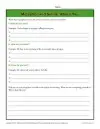
In this worksheet your student will write metaphors and similes about himself.
Metaphor Hunt
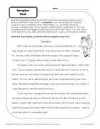
Students underline all the metaphors in this brief story called, “The Haircut”.
Metaphor Meanings

Students read each sentence and tell what each metaphor is comparing.
Metaphors and Similes in Shakespeare: Explain the Meaning
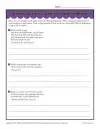
This worksheet features a variety of metaphors and similes from Shakespeare for your student to anaylze.
Metaphors and Similes: Explain the Meaning
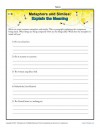
Your student is asked to explain the meanings of these metaphors and similes in this worksheet.
Metaphors Compare Things
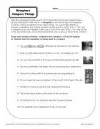
Students underline the metaphor and circle the people or objects that the metaphor is being used to compare.
Mixed Metaphors!
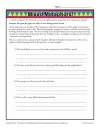
Metaphors are great, until they get mixed up!
Using Metaphors
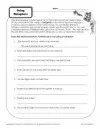
Students read each sentence and re-write it using a metaphor.
Warm Up to Metaphors!
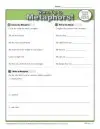
The job was a breeze. Casey is a night owl. These are examples of metaphors. Print out this free worksheet and have your students identify the metaphors as well as come up with their own.
What is a Metaphor?
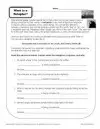
A metaphor worksheet that prompts students read each sentence and explain what the metaphor compares
Which Is It? Metaphor or Simile?
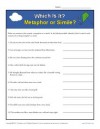
Your student will decide which is a metaphor and which is a simile in this worksheet.
Write a Christmas Metaphor or Simile
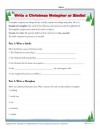
Similes are fun to write, especially in this Christmas themed worksheet! Along with similes, students will also write a sentence using metaphors.
Figurative Language: What Is It?
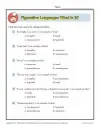
This multiple choice worksheet asks your student to identify the type of figurative language used in the sentence or phrase.
Working with Figurative Language
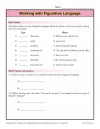
In this worksheet your student will match up the figures of speech with the phrase or sentence.
A Visit From St. Nicholas Figurative Language Activity
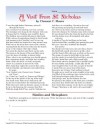
In this worksheet about the famous Christmas poem “A Visit from St. Nicholas,” your student will find the similes and metaphors.

292 Useful Metaphor Examples! Types of Metaphors with Examples
One of the most frequently used forms of figurative language in the English language is the metaphor. But what is this figure of speech used for and how can it be used in a day-to-day conversation? In this article, we are going to take a look at the answer to both of these questions. We are also going to find out exactly how metaphor looks in a spoken conversation by viewing some examples as well as taking a look at some examples of the use of metaphor as a literary device.
What Is A Metaphor?
As mentioned in the introduction, a metaphor is a form of figurative language. A metaphor is a rhetorical device in which an object, idea or situation is referred to directly as something it is not. It moves away from referring to something in a literal sense, and refers to it as something else in order to create a more imaginative figure of speech and description of something.
When used as a literary device, a metaphor can add a more detailed and complex description to something giving the reader a more in depth experience. A metaphor is more easily able to convey an idea or an emotion than by simply using a literal statement.
Metaphor Examples
Metaphor examples in spoken language.
In a day-to-day speech, you are likely to hear the use of metaphors very often. They are a common type of figurative language and can be heard in many types of situations. We are now going to take a look at some examples of sentences that feature metaphors in order to better understand how they are used in a conversation.
- The snow was a blanket of white on the ground.
- Her singing was so good, she was a shining star.
- She cried a river of tears after her father passed away.
- My next-door neighbour is a real old dragon.
- When it comes to eating, he is a pig.
- My sister is a night owl.
- My wife is an old dinosaur.
- You are such a chicken.
- The crocodile had teeth that were white daggers.
- The dancer was a swan.
- He is so clumsy he is a bull a china shop.
- My husband is a sofa hog.
- He is my sunshine.
- The desert is a dry bone.
- The clouds are fluffy cotton candy.
- Her temper is a volcano.
- The grass in the garden is a green carpet.
- The stars are sparkling gems in the sky.
- The sisters are two peas in a pod.
- The solution is just a sticking plaster for the problem.
- The eyes are a window to your soul.
- Last summer, I was boiling hot.
- This is music to my ears.
- Thank you for your help, you are a true angel.
Metaphor Examples for Kids
- Life is a journey.
- The world is a stage.
- Time is a thief.
- Love is a rose.
- Knowledge is power.
- Laughter is medicine.
- The sun is a golden ball in the sky.
- The wind is a playful kitten.
- My brother is a monkey.
- My teacher is a walking encyclopedia.
- The ocean is a vast, blue blanket.
- My sister is a shining star.
- The city is a jungle.
- The moon is a silver coin in the sky.
- The night is a black cloak.
Metaphor Examples in Literature
Using a metaphor in a literary piece is an extremely popular choice with writers because this type of figurative language can add an extra layer of complexity to the writing and better convey the feeling of the piece. Now we are going to take a look at some examples of times in which metaphor has been used in a literary sense.
- In the song sing by Michael Buble, we see an example of metaphor in the line ‘ why do you not cry me a river? ‘
- In ‘The sun rises’ written by John Donne, we see an example of metaphor in the line ‘ she is all princes and she is all states .’
- In the piece ‘ shall I compare thee to a summers day? ‘ there are examples of metaphor throughout the work, one of these examples is that William Shakespeare uses a metaphor to describe a life long love by calling it ‘ an eternal summer .’
- In the poem ‘When I have fears’ written by John Keats, we can see an example of metaphor in the line ‘ before high piled books in character, they hold like rich the ripened grain .’
- In ‘the sun rising’ written by John Donne, we can see another example of metaphor being used in the line ‘ busy old fool, you unruly sun. ‘
- ‘I carry your heart with me’ written by E E Cummings, shows a good example of metaphor in the line ‘ you are what a moon means and what a sun sings is you .’
- Kate Chopin uses metaphor in her piece ‘The storm’ where she writes the line ‘ her words are a fountain of delight. ‘
- In ‘The call of Cthulhu’ written by H P Lovecraft, we can see an example of metaphor when we read the line ‘ we live on a calm island of ignorance in the middle of infinite black oceans .’
- In the song ‘Hound dog’ by Elvis Presley, we see a metaphor in the title line when he sings ‘ you are nothing but a hound dog. ‘
- The song by Rascal Flatts, ‘life is a highway’ features a metaphor in it’s title by stating that life is in fact a highway.
- In the song ‘human nature’ by Michael Jackson, we can see that there is a metaphor example in the line ‘ life is an apple so let me take a bite. ‘
- Switchfoot sings a song which uses a metaphor as it’s title, which is ‘ love is a song .’
- In the song ‘heart of gold’ by Neil Young, there are many examples of metaphor, one of them is seen in the line ‘ I am a minor for a heart of gold. ‘
Metaphor Examples in Poems
- “The fog comes / on little cat feet.” – Carl Sandburg
- “I wandered lonely as a cloud” – William Wordsworth
- “Life’s but a walking shadow, a poor player / That struts and frets his hour upon the stage” – William Shakespeare
- “A book is a garden, an orchard, a storehouse, a party, a company by the way, a counsellor, a multitude of counsellors.” – Henry Ward Beecher
- “All the world’s a stage, / And all the men and women merely players” – William Shakespeare
- “My heart is a lonely hunter that hunts / On a lonely hill.” – William Sharp
- “The moon was a ghostly galleon tossed upon cloudy seas.” – Alfred Noyes
- “Love is a smoke made with the fume of sighs” – William Shakespeare
- “The wind tapped like a tired man / And like a host, ‘Come in,’ / I boldly answered; entered then / My residence within.” – Emily Dickinson
- “A hope like the sun / Aspires, / And shines, / And never sets.” – Emily Dickinson
- “Hope is a thing with feathers / That perches in the soul” – Emily Dickinson
- “The mind is a universe and can make a heaven of hell, a hell of heaven.” – John Milton
- “O my Luve’s like a red, red rose / That’s newly sprung in June” – Robert Burns
- “Time is a thief that steals our years away” – Edward Young
- “The streets were a furnace, the sun an executioner” – Cynthia Ozick
- “The world is a book, and those who do not travel read only one page” – Saint Augustine
- “Memory is a mirror that scandalously lies.” – Julio Cortázar
- “My heart’s a stereo / It beats for you, so listen close” – Gym Class Heroes
- “The tree of liberty must be refreshed from time to time with the blood of patriots and tyrants.” – Thomas Jefferson
- “Life is a game of whist. From unseen sources / The cards are shuffled and the hands are dealt.” – Edwin Arlington Robinson
Metaphor Examples (By Different Categories)
Examples of metaphors about nature:.
- As busy as a bee
- As free as a bird
- As gentle as a lamb
- As fierce as a tiger
- As cool as a cucumber
- As bright as the sun
- As steady as a rock
- As fast as lightning
Examples of Metaphors about Food and Drink:
- Life is like a box of chocolates
- She’s a peach
- He’s a lemon
- She’s a hot potato
- He’s a cold fish
- She’s a spicy meatball
- Life is a bowl of cherries
- She’s the apple of his eye
Examples of Metaphors about the Body:
- He has a heart of gold
- She’s a breath of fresh air
- He’s got nerves of steel
- She’s a pain in the neck
- He’s a real pain in the butt
- She’s a sight for sore eyes
- He’s got a sharp tongue
- She’s all ears
Examples of Metaphors about Animals:
- As sly as a fox
- As strong as an ox
- As quiet as a mouse
- As busy as a beaver
- As stubborn as a mule
- As wise as an owl
- As slippery as an eel
- As happy as a clam
Examples of Metaphors about Technology:
- My brain is a computer
- My phone is my lifeline
- His mind is a well-oiled machine
- She’s wired for success
- His memory is like a hard drive
- She’s a master of multitasking
- He’s a tech wizard
- She’s a coding genius
Examples of Metaphors about Emotion:
- She was boiling with anger
- He was on cloud nine after winning the race
- She was drowning in sorrow
- He was a volcano of emotions
- She was bursting with excitement
- He was feeling blue
- She was over the moon with joy
- He was simmering with frustration
Examples of Metaphors about Behaviors:
- He was walking on eggshells around his boss
- She was tiptoeing around the issue
- He was playing it safe
- She was testing the waters
- He was running in circles trying to solve the problem
- She was juggling too many tasks
- He was dancing around the question
- She was tip-toeing through the minefield of office politics
Examples of Metaphors about Love:
- He wears his heart on his sleeve
- She’s a ray of sunshine in his life
- He’s head over heels in love with her
- She’s the missing piece in his puzzle
- He’s her knight in shining armor
- She’s the light in his darkness
- He’s her rock in the stormy sea of life
Examples of Metaphors about Time:
- Time is money
- Time flies when you’re having fun
- The past is a foreign country
- The future is a blank slate
- The present is a gift
- Time is a thief
- The years are creeping up on her
- He’s stuck in a time warp
Metaphor Examples about Knowledge and Learning:
- Knowledge is power
- She’s a walking encyclopedia
- He’s a quick study
- She’s a sponge for new information
- He’s a font of knowledge
- Learning is a journey
- She’s cracking the code
- He’s unlocking the mysteries of the universe
Metaphor Examples about Success and Failure
- Failure is a stepping stone to success
- Success is a double-edged sword
- He’s climbing the ladder of success
- She’s hitting a brick wall
- He’s treading water
- She’s making great strides
- He’s on a slippery slope
- She’s stuck in a rut
Metaphor Examples about Health and Illness
- He’s fighting a losing battle
- She’s a picture of health
- He’s as fit as a fiddle
- She’s burning the candle at both ends
- He’s a ticking time bomb
- She’s on the road to recovery
- He’s walking on thin ice
- She’s living on borrowed time
Metaphor Examples about Creativity
- She’s a creative powerhouse
- His mind is a wellspring of ideas
- She’s a master of her craft
- He’s painting with words
- She’s weaving a tapestry of ideas
- He’s sculpting his vision
- She’s writing a symphony of words
- He’s a virtuoso of creativity
Metaphor Examples about Travel
- Life is a journey, not a destination
- She’s setting sail on a new adventure
- He’s charting his own course
- She’s wandering down the path less traveled
- He’s hitting the open road
- She’s taking the scenic route
- He’s exploring new horizons
- She’s crossing the finish line
Metaphor Examples about Politics
- He’s playing hardball
- She’s a political animal
- He’s a political lightning rod
- She’s playing both sides of the fence
- He’s pandering to the base
- She’s a political chameleon
- He’s a kingmaker
- She’s a rising star in the political arena
Metaphor Examples about Relationships
- She’s the yin to his yang
- He’s the peanut butter to her jelly
- She’s the sugar to his spice
- He’s the wind beneath her wings
- She’s the key to his heart
- He’s the missing puzzle piece in her life
- She’s the light of his life
- He’s the love of her life
Metaphor Examples about Sports
- Life is a game, and we are the players
- He’s a slam dunk in the basketball court
- She’s a home run in the baseball field
- He’s a touchdown in the football game
- She’s a star player in the team
- He’s playing ball with life
- She’s a runner-up in the race
- He’s a team player in the game of life
Metaphor Examples about Money
- Money is the root of all evil
- He’s as rich as Croesus
- She’s penny-wise and pound-foolish
- He’s living from paycheck to paycheck
- She’s in the red financially
- He’s as tight-fisted as Scrooge
- She’s made a killing in the stock market
- He’s throwing money down the drain
Types of Metaphors (with Examples)
There exist five main types of metaphors, and an additional sixth one, which is essentially a mix of two or more metaphors.
Let’s detail each one for further illustration:
Standard Metaphor Examples (Direct Metaphor)
The standard metaphor is a direct comparison that treats one idea or entity as synonymous with another. The basic formula to represent this type of metaphor would be “X is Y” or “X = Y.”
Example: “Anna is a sweetie pie.”
This sentence directly compares Anna to the sweetie pie, signifying perhaps that Anna has a charming character.
More Standard Metaphor Examples:
- My love is a rose in bloom.
- She has a heart of gold.
- His temper was a volcano about to erupt.
- My father is the rock of our family.
- Time is money.
- Her words were a knife that cut deep.
- His eyes were a window to his soul.
- Love is a battlefield.
- The classroom was a zoo.
- The stormy relationship was a rollercoaster ride.
- His words were music to her ears.
- She was a ray of sunshine on a cloudy day.
- The sea of faces in the crowd was overwhelming.
- The city was a melting pot of cultures.
- He was a lion on the basketball court.
- Her dreams were a castle in the sky.
- She was a fish out of water in the new school.
- The future is a blank canvas waiting to be painted
Implied Metaphor Examples (Indirect Metaphor)
As the term suggests, an implied metaphor compares two unrelated things without explicitly mentioning the other.
Example: “Mike bleated bitterly during the entire trip.”
In this example, Mike is being likened to an annoying sheep or goat, as is suggested by the use of the verb “bleated,” corresponding to the animal’s characteristic cry. The animal itself is not mentioned but merely hinted at.
More Implied Metaphor Examples:
- The night sky was a dark blanket over the city.
- His anger boiled and spilled over.
- The scent of his cologne lingered in the air, a sweet memory of him.
- The problem is a thorn on my side.
- Her words were a warm embrace.
- The politician was a snake in the grass.
- The coffee shop was a beacon of warmth on a cold day.
- The dancer was a butterfly, graceful and light on her feet.
- The news was a dagger in my heart.
- The entrepreneur was a shark in the business world.
- The athlete was a cheetah on the track.
- The music was a river of emotion.
- His words were a hammer that struck deep.
- The child was a flower in bloom, growing stronger each day.
- The team was a well-oiled machine, working together seamlessly.
- The story was a maze, with twists and turns at every corner.
- The painting was a window into the artist’s soul.
- The city streets were a jungle, full of danger and excitement.
- The problem was a knot that needed to be untangled.
- Her voice was a symphony, filling the room with beauty and harmony
Visual Metaphor Examples
A visual metaphor uses images as a medium to communicate a message without saying it outright.
For example, the picture of “a person in a wheelchair cheering” may not mean much in isolation. Still, if the project leader wishes to establish a theme – namely, “smile in the face of adversity” – the image might be useful in giving away that intended interpretation.
- A heart-shaped lock and key , used to represent love or the idea of unlocking someone’s heart.
- A ship sailing through rough waters , used to represent overcoming challenges or navigating through difficult times.
- A puzzle with missing pieces , used to represent something that is incomplete or needs to be solved.
- A broken chain , used to represent freedom or breaking free from something.
- A maze or labyrinth , used to represent a complex problem or difficult situation that requires navigation and persistence.
- A tree with deep roots , used to represent stability, strength, and the idea of being grounded.
- A mirror reflecting an image , used to represent self-reflection or the idea of looking within oneself.
Extended Metaphor Examples
Extended metaphors are often employed in heavy literary work, especially poems or novels. They’re still comparisons between unlike things but extend beyond the mere sentence structure, spanning multiple paragraphs, lines, or stanzas.
One classic example can be found in Shakespeare’s Romeo and Juliet, where Juliet is described as a sun by her lover, all the while fleshing out the various traits proper to the celestial body, like its brightness and orientation.
More Extended Metaphor Examples:
- Life is a journey, and we are all just travelers on the road of existence.
- Love is a rose, beautiful and delicate, but also capable of causing pain with its thorns.
- The world is a stage, and we are all actors playing our assigned roles.
- Hope is a beacon, shining bright in the darkness and guiding us towards a better tomorrow.
- Time is a river, constantly flowing forward and impossible to stop or control.
- Knowledge is a key, unlocking doors of opportunity and opening up new worlds of understanding.
- Dreams are seeds, planted in the fertile soil of our minds, waiting to grow and bloom into reality.
- Friendship is a shelter, offering protection and comfort during life’s storms.
- Success is a mountain, a difficult climb that requires strength, perseverance, and determination.
- Trust is a fragile vase, easily shattered and difficult to repair.
Dead Metaphor Examples
Dead metaphors originally had a drastically different meaning but largely lost it due to frequent usage in other contexts.
Example: Everyone now assumes that “falling in love” is synonymous with becoming enamored without pondering about the physical act of “falling.”
It is debated among experts whether a dead metaphor is, in fact, a true one, especially when considering it doesn’t follow the underlying structure proper to this figure of speech.
More Dead Metaphor Examples:
- Foot of the bed – originally referred to the foot of a bed, but now used to describe the end of anything.
- Face of the clock – originally referred to the clock’s dial, but now used to describe the front of anything.
- Arm of a chair – originally referred to the armrest of a chair, but now used to describe the side of anything.
- Heart of the matter – originally referred to the core of an issue, but now used to describe the main point of anything.
- Head of the class – originally referred to the student with the highest academic standing, but now used to describe the best performer in any field.
- Eye of the storm – originally referred to the calm center of a hurricane, but now used to describe a peaceful moment amidst a crisis.
- Mouth of a river – originally referred to the opening of a river into a larger body of water, but now used to describe the source of anything.
- Footing the bill – originally referred to paying the bill with one’s foot, but now used to describe paying for something.
- Shooting off at the mouth – originally referred to firing a gun without thinking, but now used to describe speaking without thinking.
- Hand in hand – originally referred to holding hands, but now used to describe things that go together well
Mixed Metaphor Examples
In a mixed metaphor, the writer or speaker blends two different metaphor types, sometimes resulting in absurd comparisons that border on satire at times. Usually, the person uttering these metaphors is so cognizant of their figurative meaning that they fail to discern how ridiculous the statement sounds in its literal sense.
Example: “Birds of a feather have left the station”
This metaphor combines two wholly incompatible comparisons: “Birds of a feather flock together” and “the train has left the station.” There is nothing undergirding this statement other than the fact that it’s “grammatically correct.”
More Mixed Metaphor Examples:
- “We’ll burn that bridge when we come to it.” (Combining “burning bridges” and “crossing bridges”)
- “He’s a loose cannonball on a sinking ship.” (Combining “loose cannon” and “sinking ship”)
- “She’s a wolf in sheep’s clothing, but the cat’s out of the bag.” (Combining “wolf in sheep’s clothing” and “cat’s out of the bag”)
- “I’ll ride this train until the wheels come off.” (Combining “riding a train” and “wheels come off”)
- “He’s a fish out of water who’s trying to climb the corporate ladder.” (Combining “fish out of water” and “climbing the corporate ladder”)
- “Let’s take the bull by the horns and grab the tiger by the tail.” (Combining “take the bull by the horns” and “grab the tiger by the tail”)
By looking at the metaphor in a more profound way, we have discovered that it is a form of figure of speech which replaces the name of an item, situation or action with something that it is not. It is a more creative and expressive way to show the literal meaning of something without using literal speech.
Metaphors are extremely common in spoken English and can be regularly heard in day to day conversation. They are also very popular for use in writing, whether that is in song, script , poetry or otherwise, enabling the writer to add more emotional and deep meaning to a statement.
Metaphor Infographic
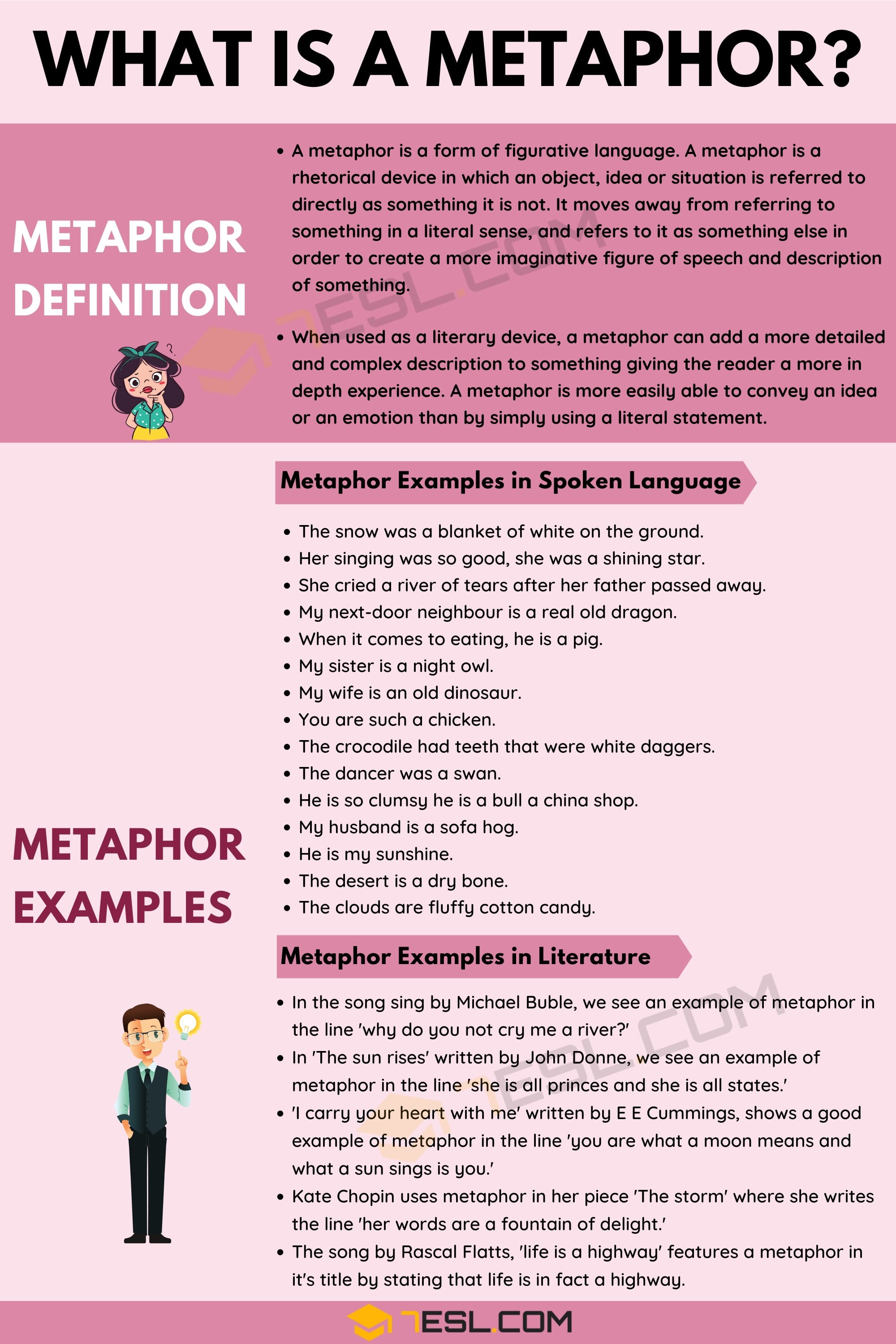
Frequently Asked Questions on Metaphors
What is a metaphor?
A metaphor tries to integrate ideas that seem unrelated to convey an expression that can grab the audience’s attention. In other words, it’s a “figure of speech” where an idea, action, or object is described in a manner that shouldn’t be reckoned as “literally true.”
What are some examples of a metaphor?
Some common examples of metaphors include “life is a journey,” “time is money,” and “her words were music to his ears.”
Jump to full examples
What is a simile and a metaphor examples?
A simile is a figure of speech that compares two things using the words “like” or “as”. For example, “Her eyes sparkled like diamonds” is a simile that compares the brightness of someone’s eyes to the brightness of diamonds.
A metaphor, on the other hand, is a figure of speech that compares two things by saying one thing is another thing. For example, “Life is a journey” is a metaphor that compares the experience of living to the act of traveling. Another example could be “He is a shining star” which compares someone’s talent or personality to the brightness of a star.
What is an extended metaphor?
An extended metaphor is a literary device used to compare two things in a more elaborate and complex manner than a simple metaphor. It works by extending a comparison throughout a piece of writing, usually through multiple sentences or even an entire text.
For example, in John Donne’s poem “No Man Is an Island,” he compares individuals to parts of a larger world, stating “No man is an island, entire of itself; every man is a piece of the continent, a part of the main.” This metaphor is extended throughout the poem to make a statement about interdependence and the interconnectedness of all people.
Learn more.
Metaphors Video
Related Resources
- Analogy vs. Metaphor
- Simile vs. Metaphor
- Rhetorical Devices
- Literary Devices
- Figurative Language
- Figure of Speech
- Latest Posts
- 10 Rare Words for Expanding Your English Vocabulary - June 5, 2024
- Hypocritical Meaning: What Does This Term Mean? - January 27, 2024
- SWAG Meaning: What Does it Mean? - January 25, 2024

Metaphors Worksheets
Metaphors worksheets practice.
A metaphor is a figure of speech that compares two things. Often, it uses the words is, are or was. There are many metaphors in narratives or stories. Metaphors are one of the most common types of figurative language. They are often confused with similes. Metaphors compare by saying that something is something else. It is important to learn the meanings of metaphoric phrases so you may understand what you read, listen to and say in everyday life.
Here is a graphic preview for all of the metaphors worksheets. Our metaphors worksheets are free to download and easy to access in PDF format. Use these metaphors worksheets in school or at home.
a. Grades K-5 Metaphors Worksheets b. Grades 6-8 Metaphors Worksheets c. Grades 9-12 Metaphors Worksheets
Here is a graphic preview for all the kindergarten, 1st grade, 2nd grade, 3rd grade, 4th grade, and 5th grade Metaphors Worksheets. Click on the image to display our metaphors worksheets.
Metaphor List
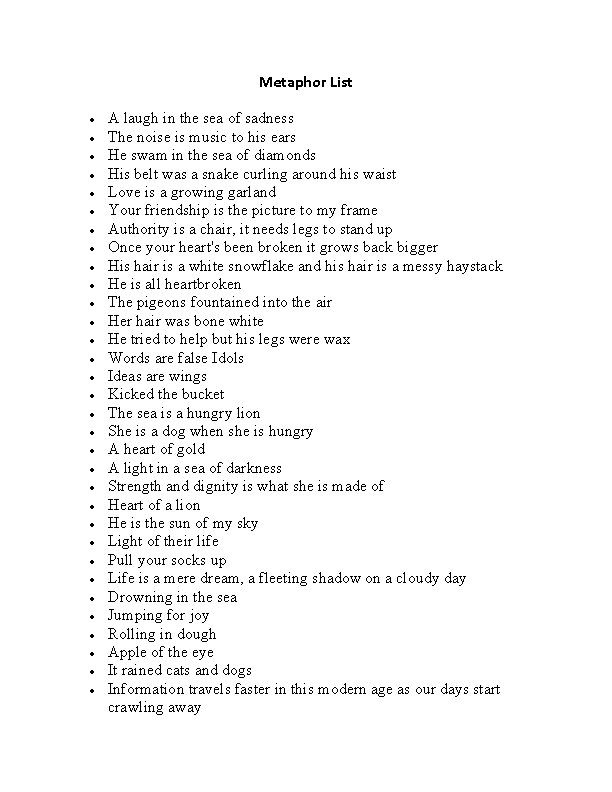
Writing Metaphors Worksheet
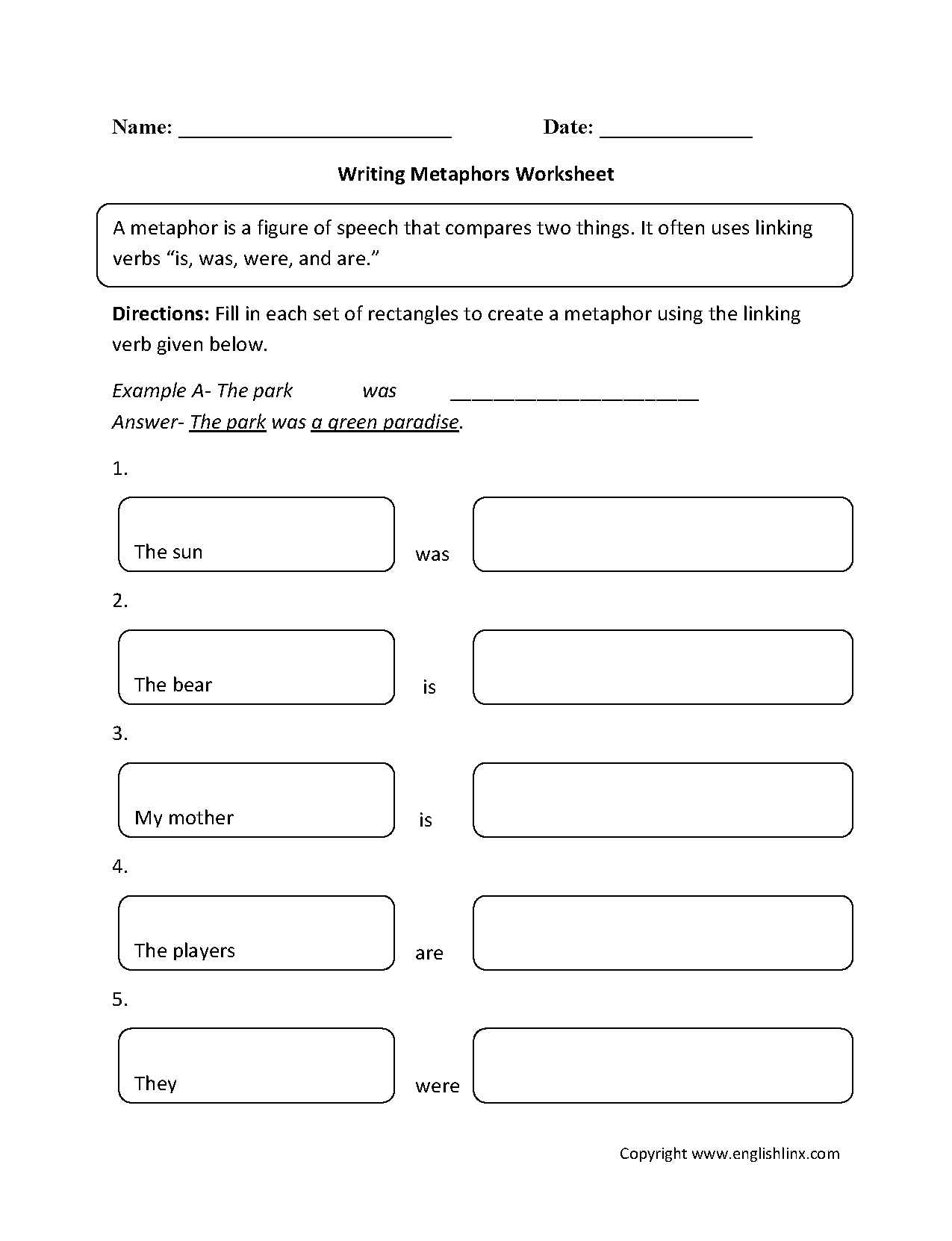
Metaphors Meanings Worksheet Part 1

Metaphor Meanings Worksheet Part 2
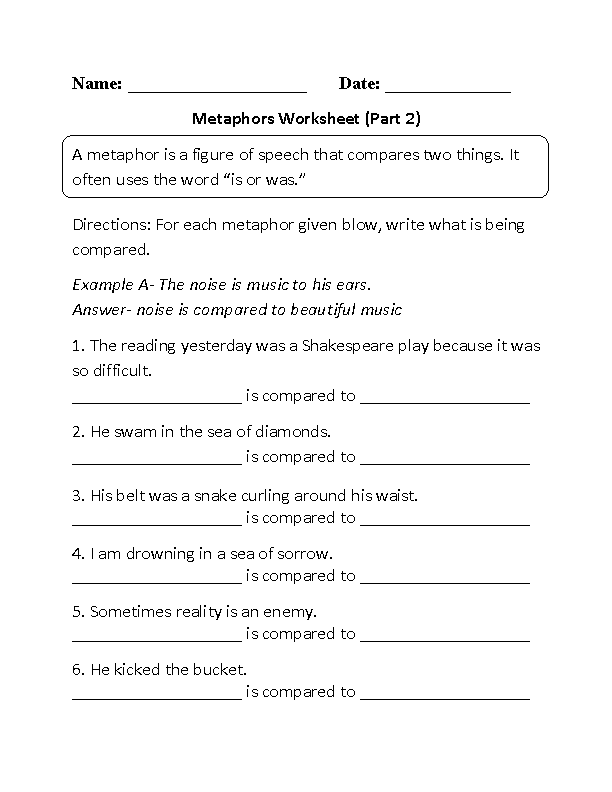
Metaphor Meanings Worksheet Part 3

Comparing Metaphors Worksheet

Comparing and Meanings Metaphors Worksheet
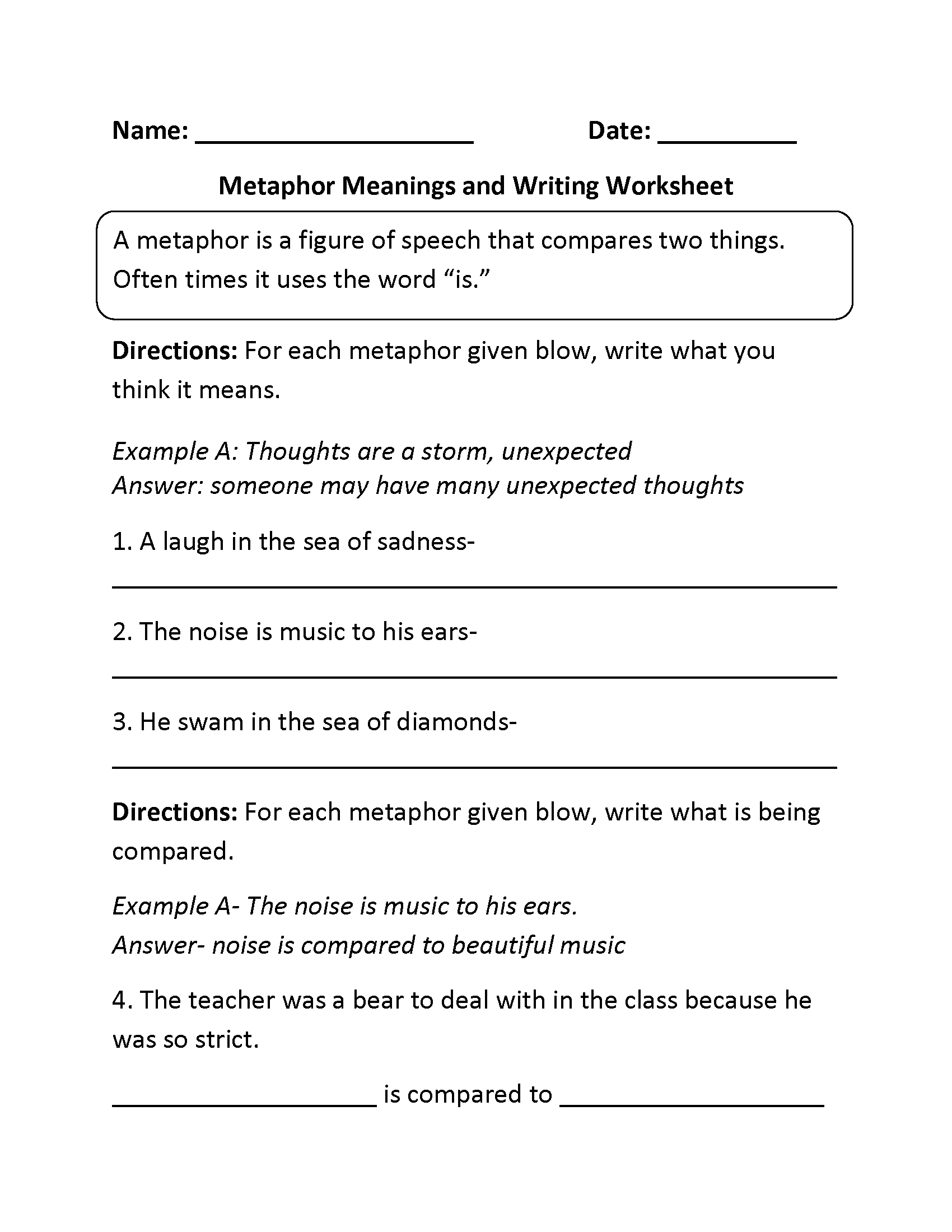
Grades 6-8 Metaphors Worksheets
Here is a graphic preview for all the 6th grade, 7th grade and 8th grade Metaphors Worksheets. Click on the image to display our metaphors worksheets.
Comparing in Metaphors Worksheet
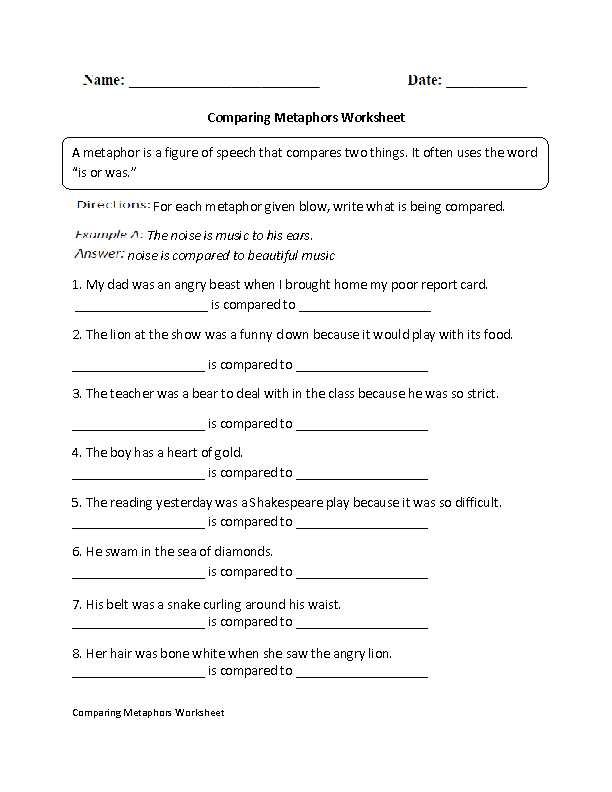
Metaphor Meanings Worksheet

Comparing and Meanings Metaphor Worksheet
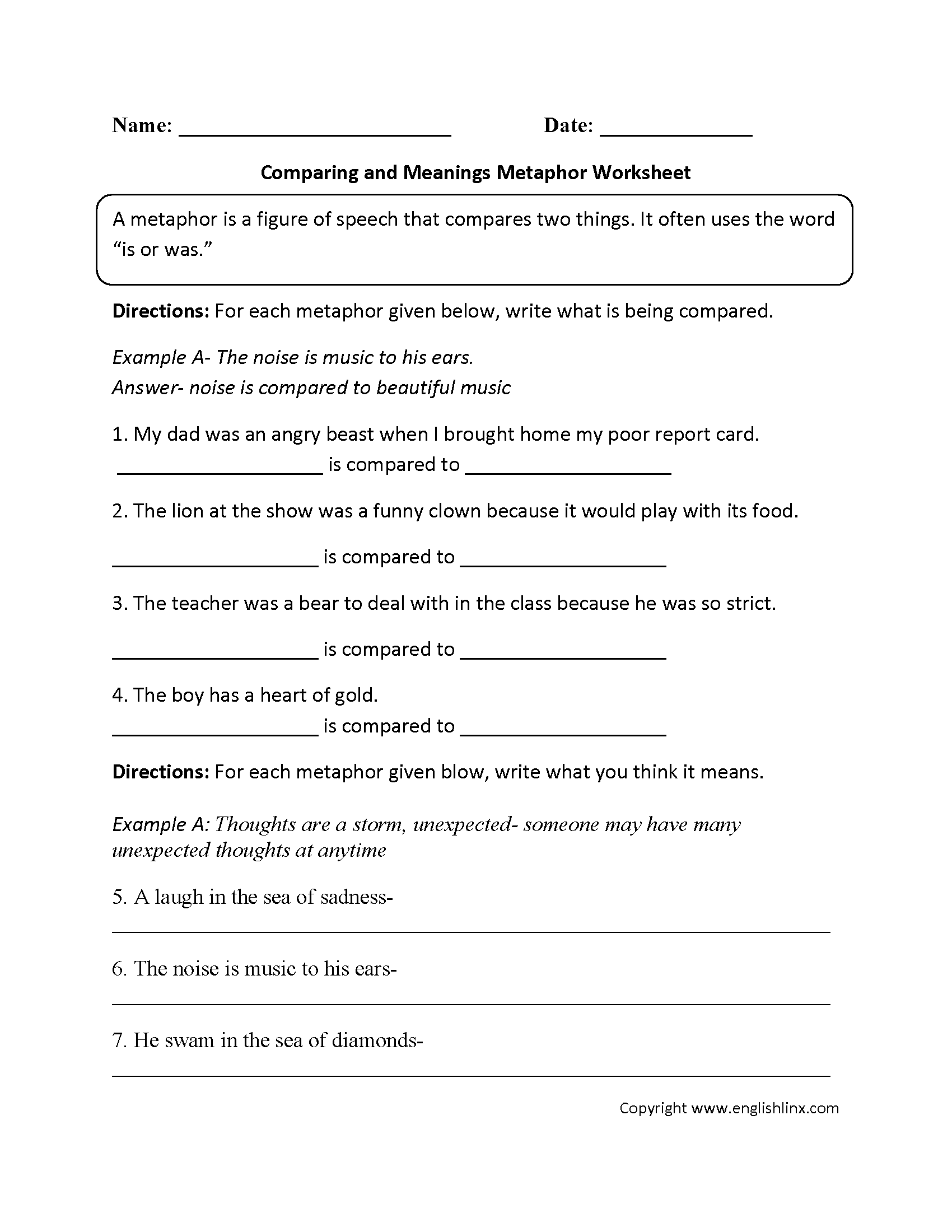
Writing with Metaphors Worksheet
Creating metaphors worksheet part 1, creating metaphors worksheet part 2, drawing metaphors worksheet, similes or metaphors worksheet.
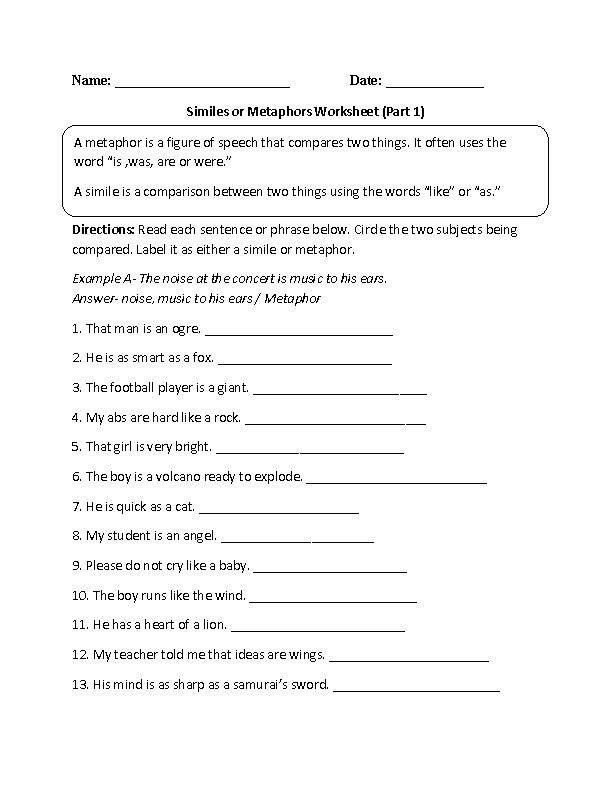
Similes and Metaphors Worksheet
Metaphor or simile quiz worksheet.

Grades 9-12 Metaphors Worksheets
Here is a graphic preview for all the 9th grade, 10th grade, 11th grade and 12th grade Metaphors Worksheets. Click on the image to display our metaphors worksheets.
Metaphor Meaning Worksheet

Learning Metaphors Worksheet
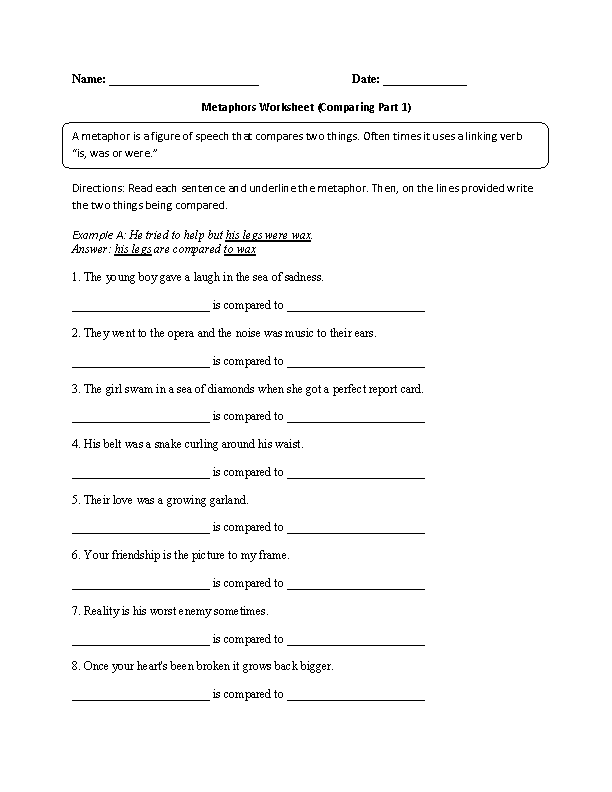
Metaphors Comparing and Meanings Worksheet
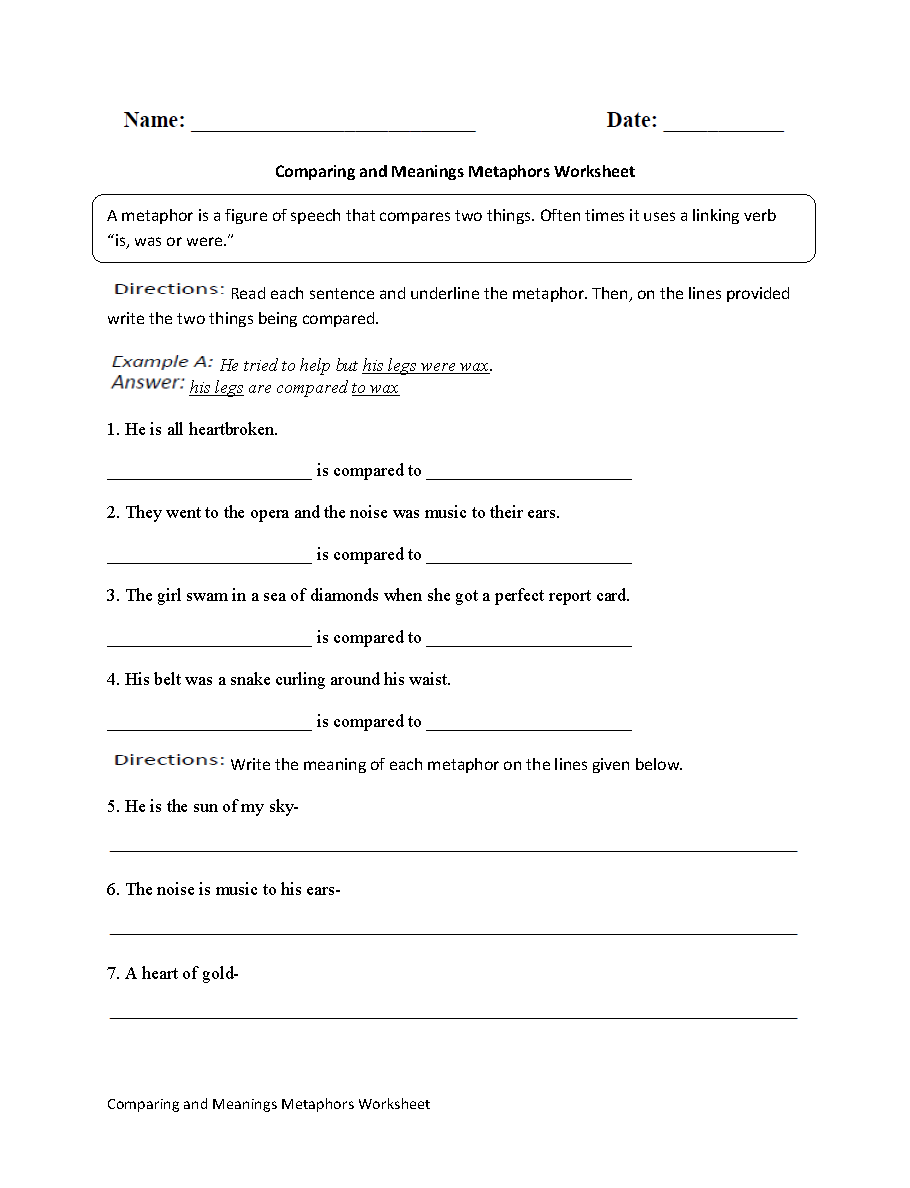
Have a language expert improve your writing
Check your paper for plagiarism in 10 minutes, generate your apa citations for free.
- Knowledge Base
- What Is a Metaphor? | Definition & Examples
What Is a Metaphor? | Definition & Examples
Published on August 11, 2023 by Eoghan Ryan . Revised on November 6, 2023.
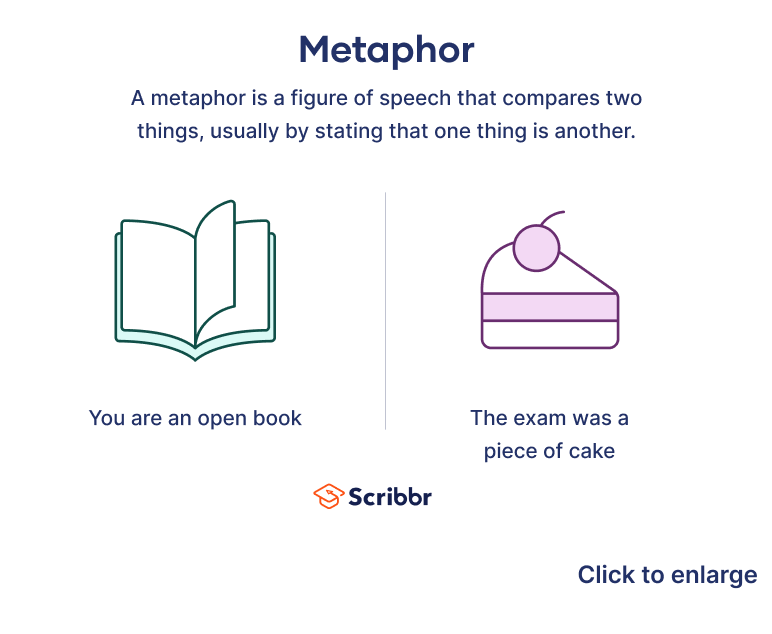
A metaphor is a figure of speech that implicitly compares two unrelated things, typically by stating that one thing is another (e.g., “that chef is a magician”).
Metaphors can be used to create vivid imagery, exaggerate a characteristic or action, or express a complex idea.
Metaphors are commonly used in literature, advertising, and everyday speech.
The exam was a piece of cake.
This town is a desert .
Table of contents
What is a metaphor, types of metaphor, metaphor vs. simile, metaphor vs. analogy, allegory vs. metaphor, worksheet: metaphor vs. simile, frequently asked questions.
A metaphor is a rhetorical device that makes a non-literal comparison between two unlike things. Metaphors are used to describe an object or action by stating (or implying) that it is something else (e.g., “knowledge is a butterfly”).
Metaphors typically have two parts:
- A tenor is the thing or idea that the metaphor describes (e.g., “knowledge”).
- A vehicle is the thing or idea used to describe the tenor (e.g., “a butterfly”).
Sophia was a loose cannon .
There are several different types of metaphor.
Direct metaphor
A direct metaphor compares two unrelated things by explicitly stating that one thing is another. Direct metaphors typically use a form of the verb “be” to connect two things.
Ami and Vera are two peas in a pod.
Implied metaphor
An implied metaphor compares two unlike things without explicitly naming one of them. Instead, a comparison is typically made using a non-literal verb. For example, the statement “the man erupted in anger” uses the verb “erupted” to compare a man to a volcano.
The captain barked orders at the soldiers. [i.e., the captain was like an angry dog]
Extended metaphor
An extended metaphor (also called a sustained metaphor) occurs when an initial comparison is developed or sustained over several lines or paragraphs (or stanzas, in the case of a poem).
Extended metaphors are commonly used in literature and advertising, but they’re rarely used in everyday speech.
And all the men and women merely players.
They have their exits and their entrances,
And one man in his time plays many parts,
Mixed metaphor
A mixed metaphor is a figure of speech that combines two or more metaphors, resulting in a confusing or nonsensical statement.
Mixed metaphors are usually accidental and are often perceived as unintentionally humorous. Mixing metaphors can confuse your readers and make your writing seem to lack coherence.
She’s a rising star, and with the right guidance, she’ll spread her wings.
Dead metaphor
A dead metaphor is a figure of speech that has become so familiar due to repeated use that people no longer recognize it as a metaphor. Instead, it’s understood as having a straightforward meaning.
The guest of honor sat at the head of the table .
Metaphors and similes are both rhetorical devices used for comparison. However, they have different functions:
- A metaphor makes an implicit comparison between two unlike things, usually by saying that one thing is another thing (e.g., “my body is a temple”).
- A simile makes an explicit comparison between two unlike things, typically using the words “like,” “as,” or “than” (e.g., “you’re as stubborn as a mule”).
The old man’s beard was as white as snow .
There are two main types of analogy:
- Identical relationship analogies indicate the logical relationship between two things (e.g., “‘Up’ is to ‘down’ as ‘on’ is to ‘off’”).
- Shared abstraction analogies compare two unlike things to illustrate a point.
Metaphors are sometimes confused with shared abstraction analogies, but they serve different purposes. While metaphors are primarily used to make a comparison (e.g., “John is a caveman”), shared abstraction analogies are used to make an argument or explain something.
Metaphors are sometimes confused with allegories, but they have different functions:
- A metaphor makes an implied comparison between two unlike things, typically by stating that one thing is another (e.g., “time is money”).
- An allegory illustrates abstract concepts, moral principles, or complex ideas through symbolic representation.
Allegories are typically longer than metaphors and usually take the form of a story.
You can test your knowledge of the difference between metaphors and similes with the worksheet below. Choose whether each sentence contains a metaphor or a simile.
- Practice questions
- Answers and explanations
- You sing like an angel.
- The boxer is as strong as an ox.
- Hannah is a warrior.
- Your eyes are deeper than the ocean.
- Most of the time, you’re an angel. But you’re like a demon when you’re tired.
- This sentence contains a simile because it makes a direct comparison using the word “like.”
- This sentence contains a simile because it makes a direct comparison using the word “as.”
- This sentence contains a metaphor because it makes an implicit comparison by saying that something is something else.
- This sentence contains a simile because it makes a direct comparison using the word “than.”
- This sentence contains both a metaphor (“you are an angel”) and a simile (“like a demon”).
An extended metaphor (also called a sustained metaphor ) is a metaphor that is developed over several lines or paragraphs.
The following is an example of an extended metaphor in William Shakespeare’s Romeo and Juliet :
“But soft, what light through yonder window breaks?
It is the East, and Juliet is the sun.
Arise, fair sun, and kill the envious moon,
Who is already sick and pale with grief
That thou, her maid, art far more fair than she.”
A metaphor is a figure of speech that makes a non-literal comparison between two unlike things (typically by saying that something is something else).
For example, the metaphor “you are a clown” is not literal but rather used to emphasize a specific, implied quality (in this case, “foolishness”).
Cite this Scribbr article
If you want to cite this source, you can copy and paste the citation or click the “Cite this Scribbr article” button to automatically add the citation to our free Citation Generator.
Ryan, E. (2023, November 06). What Is a Metaphor? | Definition & Examples. Scribbr. Retrieved July 19, 2024, from https://www.scribbr.com/rhetoric/metaphor/
Is this article helpful?

Eoghan Ryan
Other students also liked, how to avoid repetition and redundancy, parallel structure & parallelism | definition, use & examples, grawlix | definition, meaning, use & examples, get unlimited documents corrected.
✔ Free APA citation check included ✔ Unlimited document corrections ✔ Specialized in correcting academic texts

Metaphor Definition
What is metaphor? Here’s a quick and simple definition:
A metaphor is a figure of speech that compares two different things by saying that one thing is the other. The comparison in a metaphor can be stated explicitly, as in the sentence "Love is a battlefield." Other times, the writer may make this equation between two things implicitly , as in, "He was wounded by love." The comparisons created by metaphor are not meant to be taken literally. Rather, metaphors are figurative —they create meaning beyond the literal meanings of their words. For instance, these examples are, of course, not saying that love is actually a field of battle or that the person actually got a physical injury from love. Instead, they capture how love can be painful, a struggle, even a showdown between opponents, and—as many good metaphors do—through their comparison they make description more vivid, more relatable, or reveal new ways of seeing the world.
Some additional key details about metaphor:
- Metaphor is one of the most common figures of speech , used by writers throughout history and across the world. They are common in everyday speech and all forms of writing, from narrative fiction, to poetry, to persuasive writing.
- Metaphor is a type of analogy : a comparison between two things or ideas. Take a look at the entry that covers analogy to learn more about the difference between analogy and metaphor.
- There are actually two accepted definitions of metaphor: one that's quite broad, and one that's more specific. The broader definition includes any type of comparison or association, and includes under its umbrella other figures of speech, such as simile . The other, more narrow definition is the one we focus on in this entry, and is limited to figures of speech that state one thing is the other.
Metaphor Pronunciation
Here's how to pronounce metaphor: met -uh-fore
The Anatomy of a Metaphor
Metaphors can be broken down into two elements: a tenor and a vehicle.
- The tenor is the thing a metaphor describes.
- The vehicle is the thing to which the tenor is compared.
For instance, in the metaphor " Love is a battlefield ," love is the tenor because it's the thing being described, while "battlefield" is the vehicle because it's the thing love is being compared to. The metaphor operates by borrowing key attributes from the vehicle and ascribing them to the tenor: love is violent, brutal, life-threatening.
A strong metaphor is one in which the attributes shared by the vehicle and the tenor are clear without further explanation. For example, "she's a gem" is a widely used metaphor whose meaning would probably be pretty clear even if we hadn't all heard it a thousand times: it's a way of saying someone is precious, treasured, lovely. "He's a peanut butter sandwich," on the other hand, is a pretty mystifying statement, since the vehicle—a peanut butter sandwich?—doesn't immediately call to mind any particularly vivid qualities or adjectives, let alone adjectives that would be used to describe a person. As a result, a weak metaphor such as this one leaves the mind searching for a basis of comparison between the tenor and the vehicle: is he... sticky? Unappetizing? A perfect combination of two things?
Types of Metaphors
There are a handful of varieties of metaphor that fall under the larger umbrella of "metaphor." Here are a few important ones:
- Conventional Metaphors are just what they sound like: metaphors that have become such a common part of speech that they no longer call attention to their status as metaphors. For instance, when we say that someone is an expert in his or her "field," field is a conventional metaphor for "area of study" or "profession," because it's been used so frequently that we don't even realize we're referencing a physical field. Some sources say that when a conventional metaphor has completely lost its "effectiveness" or ability to influence thought, it becomes a Dead Metaphor. The concept of "dead metaphors" is controversial however, because many people argue that simply because something becomes unconscious, doesn't mean it's dead.
- Creative Metaphors, in contrast to conventional metaphors, are novel comparisons that draw attention to their status as metaphors. The following Rita Rudner quote is a creative metaphor: "Before I met my husband, I'd never fallen in love. I'd stepped in it a few times." Rudner, here, is twisting and playing with the metaphor "falling love" to emphasize the fact that it is a metaphor, and then she's creating a new metaphor all her own. (Of course, she's a comedian so she's also doing it to get laughs.)
- Mixed Metaphor is a combination of two or more incongruous comparisons. These can occur accidentally, or a writer may string incompatible metaphors together for comedic effect. For example, the mixed metaphor, "He was born with a silver foot in his mouth" combines the metaphors "To be born with a silver spoon in one's mouth" (meaning: to be born privileged) and "To put one's foot in one's mouth" (meaning: to say something embarrassing) to create a puzzlingly humorous hybrid. Mixed metaphor is often referred to as catachresis.
- "In a sense we’ve come to our nation’s capital to cash a check. When the architects of our republic wrote the magnificent words of the Constitution and the Declaration of Independence, they were signing a promissory note to which every American was to fall heir. This note was a promise that all men, yes, black men as well as white men, would be guaranteed the “unalienable Rights” of “Life, Liberty and the pursuit of Happiness.” It is obvious today that America has defaulted on this promissory note..."
- Absolute metaphors are metaphors in which the tenor can't be distinguished from the vehicle. In other words, the content of the metaphor can't be stated explicitly, because the only way to express the content is through the metaphor itself. An example would be "Life is a journey." We're constantly equating life with a journey, often without realizing it, when we say things like "That kid is off to a good start" or "He's taken the road less travelled," because so much of life is unknown: we have no other way in our language to explain the complex, all-encompassing experience that life is. As a result, this metaphor starts to actually shape the way we see life, and the comparison it makes becomes a truth that's impossible to express without the metaphor itself.
These are the most common varieties of metaphor. Here's a great resource with information about still more types of metaphors.
The Debate Over Metaphor's Meaning
There are actually two accepted definitions of metaphor—one that's quite broad and one that's more specific—and people commonly confuse the two without even noticing, so it follows that there is some debate over which definition is correct . The truth is, both definitions are correct, and for that reason it's useful to have a solid understanding of both, as well as what makes them different. These are the two definitions given in the Oxford Companion to English Language —the first one broad, the other narrow:
- Metaphor: All figures of speech that achieve their effect through association, comparison, and resemblance. Figures like antithesis , hyperbole , metonymy , and simile are all species of metaphor.
- Metaphor: A figure of speech which concisely compares two things by saying that one is the other.
This entry focuses on the second, narrower definition of metaphor. To read more about the broader definition of metaphor, it may help to take a look at the entry on analogy —another broad category that encompasses many of the same figures of speech as the broader definition of metaphor.
Metaphor vs. Simile
Of all the different kinds of figures of speech that fit under the broader definition of metaphor (described above), simile is the one that is most often confused with the more specific definition of metaphor that we cover in this entry, since both simile and metaphor are figures of speech that involve the comparison of unlike things. However, simile and metaphor do not make comparisons in the same way. The most obvious difference between simile and metaphor can be summed up this way:
- Similes use the words "like" or "as" to establish their comparison: "The world is like your oyster."
- Metaphors state the comparison without such connecting words: "The world is your oyster."
While the presence of a connecting word, such as "like" or "as," is generally a good rule of thumb to identify similes versus metaphors, it doesn't get at the root of the difference between these two figures of speech. A deeper way to understand the difference is through the nature of the comparison each one makes:
- A simile makes an explicit comparison by asserting that two different things are similar . A simile sets thing A and thing B side by side to compare them. In the sentence "The world is like your oyster," the listener is asked to mentally visualize and compare "the world" and "an oyster"—as though he or she were holding one in each hand—and draw a comparison between the two.
- A metaphor asserts an implicit comparison by stating that one thing is the other thing . Instead of setting two entities A and B side by side through the use of connecting words, metaphor superimposes them. The metaphor "The world is your oyster" asks the reader to imagine his or her relationship to the world as being the relationship of an oyster to the space inside its shell.
This isn't to say that either a simile or metaphor is stronger or better than the other, just that they are subtly different in the sort of comparison they create, and this difference affects how a reader imaginatively interacts with the text.
Metaphor Examples
Examples of metaphor in literature.
Mastering the art of metaphor is essential to writing vivid, relatable poetry and prose. Furthermore, understanding a writer's use of metaphor will enable you to better understand the specific themes that run throughout works of literature.
Metaphor in F. Scott Fitzgerald's The Great Gatsby
The Great Gatsby tells the story of Jay Gatsby, an ambitious young man from a poor background, and his pursuit of the wealthy, aristocratic Daisy Buchanan. Gatsby eventually amasses a fortune large enough to purchase a mansion across the water from Daisy's estate on Long Island, New York. Throughout the novel, Gatsby gazes longingly at the green light that shines from the end of Daisy's dock, and this light becomes a symbol for Gatsby's yearning for the unattainable Daisy. Fitzgerald concludes the novel by adding a further layer of meaning to the metaphor of the Green Light:
Gatsby believed in the green light, the orgastic future that year by year recedes before us. It eluded us then, but that's no matter—tomorrow we will run faster, stretch out our arms farther.... And then one fine morning—So we beat on, boats against the current, borne back ceaselessly into the past.
Here, the green light isn't simply a symbol for Daisy, but a metaphor for the "orgastic future that year by year recedes before us,"—for the ultimate, unattainable, and perhaps even unknowable goal of each individual's ambition. This use of metaphor is a bit subtler than an "X is Y" construction such as "she's a gem," since Fitzgerald never explicitly states that the green light is anything. Instead, he uses a comma to equate the green light with the "orgastic future" that he then describes in detail. He then broadens and extends the metaphor even further by introducing the image of "boats [beating on] against the current" to describe all people who pursue such a future, seeming to suggest that everyone experiences some version of Gatsby's struggle toward the "green light."
Metaphor in Shakespeare's Romeo and Juliet
Romeo uses the following metaphor in Act 2 Scene 2 of Romeo and Juliet , after sneaking into Juliet's garden and catching a glimpse of her on her balcony:
But, soft! what light through yonder window breaks? It is the east, and Juliet is the sun.
Romeo compares Juliet to the sun not only to describe how radiantly beautiful she is, but also to convey the full extent of her power over him. He's so taken with Juliet that her appearances and disappearances affect him like those of the sun. His life "revolves" around Juliet like the earth orbits the sun. The rest of the passage, which we haven't included here, is also an example of extended metaphor—since Romeo continues to speak about Juliet as though she were the sun throughout his brief monologue.
Metaphor in James Joyces' Portrait of the Artist as a Young Man
Portrait of the Artist as a Young Man is a bildungsroman — a novel that follows the journey of a young protagonist from childhood to adulthood. In Portrait, Joyce describes the growth and maturation of Stephen Daedalus, a young boy growing up in an impoverished Irish-Catholic household who ultimately aspires to become a writer. In Chapter 5, Stephen composes the following love poem (a villanelle ) to his beloved Emma Clery (whom he actually barely knows and seldom sees):
Are you not weary of ardent ways, Lure of the fallen seraphim? Tell no more of enchanted days. Your eyes have set man's heart ablaze And you have had your will of him. Are you not weary of ardent ways? Above the flame the smoke of praise Goes up from ocean rim to rim. Tell no more of enchanted days. Our broken cries and mournful lays Rise in one eucharistic hymn. Are you not weary of ardent ways? While sacrificing hands upraise The chalice flowing to the brim, Tell no more of enchanted days. And still you hold our longing gaze With languorous look and lavish limb! Are you not weary of ardent ways? Tell no more of enchanted days.
Stephen's expression of love is full of metaphors—he likens his lovestruck heart to a "blaze," and his words of praise to "smoke." The "chalice flowing to the brim" is similarly a metaphor for the strength of Stephen's feeling—which, in the context of the novel, might be either religious or sexual in nature.
Metaphors occur frequently in love poems such as this, one reason being that the lover or narrator seeks to express the singular, unique experience of love in terms that the reader can relate to. For instance, in the example above from Romeo and Juliet, Shakespeare—through Romeo—compares Juliet to the sun, in part because he recognizes that most readers are familiar with the sun's awe-inspiring beauty, and therefore will be better able to imagine Romeo's profound admiration for Juliet through this metaphorical comparison.
However, the use of metaphors can sometimes cover up lack of knowledge about something, and this is particularly relevant to Stephen's poem. Stephen wrote his romantic villanelle to a woman he barely knows and hasn't seen for ten years. His somewhat cliché metaphor comparing love to a "heart ablaze" emitting "smoke of praise" may be interpreted not only as the first attempt of a young poet, but also as an indication that Stephen fully understands neither the woman to whom his poem is addressed, nor the complexity of his own feelings.
Metaphor in Kurt Vonnegut's Cat's Cradle
The title " Cat's Cradle " refers to a children's game in which the player makes an intricate pattern of X's by weaving a piece of string between his or her fingers. It also functions as an important metaphor in Vonnegut's novel, which follows the attempts of a nameless writer to research Dr. Felix Hoenikker: a scientist who (in the story in the book) helped invent the atomic bomb. The writer reaches out to Hoenikker's son, Newt, who tells him that on the day the Americans dropped the bomb—Dr. Hoenikker's invention—on Hiroshima, his father attempted to play cat's cradle with him. For some inexplicable reason, the game terrified Newt. The adult Newt explains:
"For maybe a hundred thousand years or more, grownups have been waving tangles of string in their children's faces... No wonder kids grow up crazy. A cat's cradle is nothing but a bunch of X's between somebody's hands, and little kids look and look and look at all those X's... No damn cat, and no damn cradle."
It's clear that even as an adult, cat's cradle retains a special significance for Newt: his father used the game as a diversion, lacking in substance and meaning, to distract himself and his son from the terrible reality of the bomb. Later on in the novel, Newt discovers that his sister, Angela, is abused by her husband. Referencing the way Angela hides her unhappiness and lies about her husband's behavior, Newt asks, "See the cat? See the cradle?" In doing so, he compares Angela's efforts to hide her husband's violence to their father's efforts to hide his own acts of violence (using cat's cradle as a distraction). Newt insightfully connects children's games to the games adults play with themselves. In short, cats cradle becomes an elaborate metaphor for evading the truth, and the way that people then become trapped and entangled in those evasions.
Examples of Metaphor in Song Lyrics
Metaphorical comparisons often make language more memorable and more powerful, and can capture and make vivid emotions and feelings in profound, new, arresting, and often concise ways. It's no wonder, then, that musicians across genres regularly use metaphor in their song lyrics.
Metaphor in Pat Benatar's "Love is a Battlefield"
In her most famous song, released on the album Live from Earth in 1983, Benatar compares love—in its dangerousness and its power—to a battlefield:
When I'm losing control Will you turn me away Or touch me deep inside And when all this gets old Will it still feel the same There's no way this will die But if we get much closer I could lose control And if your heart surrenders You'll need me to hold We are young Heartache to heartache we stand No promises No demands Love is a battlefield
Metaphor in Katy Perry's "Firework"
In "Firework" ( Teenage Dream , 2010), Perry uses extended metaphor to compare a firework to her lover's inner "spark" of resilience which, in the context of the song, stands in opposition to the dreary experience of life and the difficulty of communicating with others:
Do you know that there's still a chance for you? 'Cause there's a spark in you You just gotta ignite the light And let it shine Just own the night Like the Fourth of July 'Cause baby, you're a firework C'mon, show 'em what you're worth Make 'em go "Aah, aah, aah" As you shoot across the sky Baby, you're a firework C'mon, let your colors burst Make 'em go, "Aah, aah, aah" You're gonna leave them all in awe, awe, awe
Metaphor in The Eagles' "Life in the Fast Lane"
In the title phrase "Life in the Fast Lane" ( Hotel California , 1976), "the Fast Lane" is a metaphor for a lawless, limitless, risky mindset. If you live life in the Fast Lane, it means that you are edgy, daring, and impulsive, like the couple described in the song:
Life in the fast lane, surely make you lose your mind Life in the fast lane Life in the fast lane, everything all the time Life in the fast lane Blowin' and burnin' blinded by thirst They didn't see the stop sign; Took a turn for the worse She said, "Listen, baby. You can hear the engine ring. We've been up and down this highway; haven't seen a god-damn thing." He said, "Call the doctor. I think I'm gonna crash." "The doctor say he's coming but you gotta pay in cash." They were rushing down that freeway; Messed around and got lost They didn't care they were just dyin' to get off.
The Eagles extend the metaphor of "the fast lane" into the verse following the chorus: the "stop sign" and "engine ring" are metaphors for warning signs suggesting the couple's way of living is unsustainable.
Why Do Writers Use Metaphor?
Writers, and people in general, use metaphors for countless reasons:
- They create memorable images with language.
- They help communicate personal or imaginary experiences in terms to which readers can relate.
- By connecting different spheres of experience and language, they can lead the reader to surprising and important discoveries; the figurative meaning that metaphors create can help a reader to see the world or a concept in a new way.
- They can even sometimes hide a person's lack of knowledge about the things they're discussing.
It should be noted that metaphors aren't merely additive —in other words, they aren't just meant to embellish language or "spice it up." Metaphors actually shape our understanding of the relationships between things in the world. Without even knowing it, we constantly speak and think in metaphors.
Other Helpful Metaphor Resources
- The Wikipedia Page on Metaphor: An in-depth explanation of metaphor, its history, and how it relates to other figures of speech.
- The Dictionary Definition of Metaphor: A basic definition and etymology of the term—it comes from the Greek metaphora, meaning "a transfer."
- 99 Metaphors for Love: ThoughtCo's compendium of 99 love metaphors that span genres and centuries.
- A very worthwhile, very 1980s music video of Pat Benatar singing her metaphorically-titled song "Love is a Battlefield."
- The opening scene of Disney's Aladdin, in which Jafar learns he must find the "diamond in the rough"—a metaphorical riddle, the answer to which is Aladdin himself: a "gem" amongst the low-class riffraff.
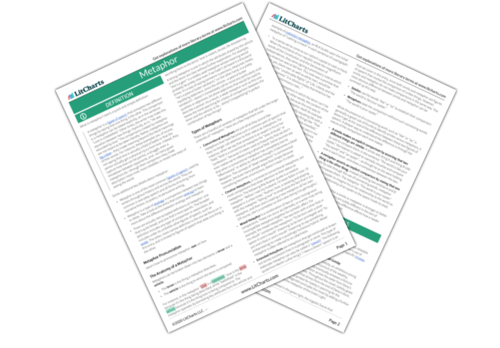
- PDFs for all 136 Lit Terms we cover
- Downloads of 1966 LitCharts Lit Guides
- Teacher Editions for every Lit Guide
- Explanations and citation info for 41,447 quotes across 1966 books
- Downloadable (PDF) line-by-line translations of every Shakespeare play
- Bildungsroman
- Extended Metaphor
- Figurative Language
- Figure of Speech
- Anachronism
- Point of View
- Antanaclasis
- Verbal Irony
- Colloquialism
- Deus Ex Machina
- Epanalepsis
- Anadiplosis
- Climax (Plot)
- Pathetic Fallacy
- Rising Action
- Climax (Figure of Speech)


Metaphors (The Ultimate Guide)
By Dr. Chris Drew, PhD in Education
A metaphor is a figure of speech where you state that something is something else, even though it is not, for literary effect.
Metaphors are not meant to be taken literally. Their intent is to highlight the similarities between two things or concepts in a vivid or memorable way.
Metaphorical language is commonly used in poetry, music, and literature. But metaphorical language is also inescapable on our everyday conversation. You might soon notice that you use metaphors more than you realize.
Key Points in this Article:
- Metaphors are used to highlight the characteristics of one thing by comparing it to another thing.
- Metaphorical language implies one thing is something else.
- Metaphors are not meant to be taken literally.
You don’t always have to use the word is to construct a metaphor, but it is the most common way to achieve metaphorical comparison.
[lwptoc depth=”2″ numeration=”none” numerationSuffix=”none” skipHeadingText=”Metaphors (The Ultimate Guide)”]
About Metaphors
1. famous examples of metaphors.
While metaphors are all around us, we often draw upon a few very famous metaphors when teaching about metaphorical language. Here are a few of the most famous examples of metaphors.
1. The World is a Stage Made famous by Shakespeare , this metaphor draws connections between theater and real life. Similarities include the fact we all have roles to play in society and that we all have storylines in our lives, just like in a play.
2. My Daughter is an Angel This metaphor implies that your daughter is a beautiful, pure, lovely person. The daughter is compared to an angel: something that is heavenly and pure.
3. The Classroom is a Zoo This metaphor might be used to explain a classroom that is messy with children running around everywhere. The connection between the classroom and the zoo is that a zoo is full of animals hanging off things, running around, and being generally disorderly!
4. Life is a Marathon We will often say “life is a marathon, not a sprint.” Of course, life isn’t a literal marathon, but there is a similarity that is drawn out in this metaphor. The similarity is that marathons take a long time and require you to pace yourself to get through.
5. The Man is a Dinosaur When you call someone a dinosaur, you are using a metaphor to describe the fact that they are very old, like a dinosaur!
2. How Metaphors are Made: The Tenor and Vehicle
The two things being compared in a metaphor are called the tenor (the thing we want to describe) and vehicle (the thing we are using to make the comparison).
Here are some examples:
Life is a Rollercoaster
- Metaphor: Life is a rollercoaster. It is full of ups and downs.
- Tenor: Life
- Vehicle: Rollercoaster
- Explanation: Life is being compared to a rollercoaster. Instead of saying life is like a rollercoaster, we are saying it is a rollercoaster to achieve literary impact. The similarity between the tenor and the vehicle is that they both have high moments and low moments.
The Snow is a Blanket
- Metaphor: The snow is a blanket over the landscape.
- Tenor: Snow
- Vehicle: Blanket
- Explanation: The snow is being compared to a blanket. The similarity here is that the snow has entirely covered the landscape like a blanket would if you threw it over the grass. The message being conveyed is that the snowfall was so thick that you can no longer see the ground.
3. Types of Metaphors
There are many different types of metaphors . They come in all shapes and sizes. These were mapped in a famous taxonomy in 1980 by Lakoff and Johnson . The most common are:
a) Visual Metaphors
Visual metaphors are metaphors that are depicted through images rather than words. In my classes, I’ll often get my students to find a visual metaphor for homework for the week. I’ll say to them: “find me a metaphor for learning”. They will often come back to me with images like a picture of a rollercoaster (as a visual metaphor for the ups and downs of learning) or a picture of a turtle (as a visual metaphor for how learning can be a long, slow process).

b) Mixed Metaphors
We create mixed metaphors when we use two different metaphors at the same time.
We can do this in two ways.
In the first way, we’ll create one new metaphor out of two different ones. For example, you can get two metaphors about death, like “He’s sleeping with the fishes” and “started a worm farm”, and create a new metaphor: “He’s sleeping with the worms.”
These sorts of mixed metaphors often sound funny and are mixed-up by accident.
In the second way, you can get two metaphors and put them right next to each other. So you can get two death metaphors like “He’s pushing up daisies” and “He went to the farm upstate” and turn them into a new mixed metaphor: “He’s pushing up daisies in the farm upstate.”
Examples of Mixed Metaphors
| Mixed Metaphor | First Metaphor | Second Metaphor |
|---|---|---|
| He hit a home run and was dancing in the endzone. | From Baseball: To hit a home run (to do exceptionally well). | From Football: To dance in the endzone (to celebrate success). |
| He appeared wet behind the ears on his bully pulpit. | Wet behind the ears (to be inexperienced, relating to new-born farm animals). | Bully pulpit (to have a position where you can spread your message to many people). |
| We will all be in the same boat when we’re pushing up daisies. | All in the same boat (everyone in the same situation). | Pushing up daisies (to be dead). |
c) Implied Metaphors
Implied metaphors do not directly name the thing being compared (the part of the metaphor we call the ‘vehicle’). Instead, a feature or behavior of the thing being compared is used. Thus, you are implying a similarity rather than making it explicit.
A good example is in the saying “she returned home with her tail between her legs”. This means that someone returned home behaving like an ashamed dog.
But a dog was never mentioned. It was simply implied.
For this phrase to work, we need to know that dogs put their tails between their legs when they feel shameful.
The comparison between the girl and the dog is implied (the dog, or even shame, are not explicitly mentioned).
Examples of Implied Metaphors
| He’s got his tail between his legs. | Shame. | A Dog. |
| He’s barking up the wrong tree. | Doing something wrong that will yield no results. | A Dog. |
| That’s in my wheelhouse. | It’s something I know how to do. | Batting in Baseball. |
| He was spurred on by the encouragement. | Feeling motivated. | Horse racing. |
| We’re shooting into an open net. | It’s easy. (See more ). | Soccer / Hockey. |
d) Extended Metaphors
An extended metaphor is a metaphor that goes on for more than one sentence. You might use an extended metaphor in a full paragraph or even a full chapter of a book.
For example, the metaphor “The man is a dinosaur” can become an extended metaphor if the author of a book decided to give the man the nickname “dinosaur” for the rest of the book. This is a metaphor that will span much longer than just one sentence!
4. Metaphors vs Similes
We often learn about metaphors and similes at the same time. Both are figures of speech that make comparisons between two things.
But, they are phrased slightly differently. Here’s the difference:
- A metaphor says one thing is another thing. The phrase sounds literal but it is not meant to be. We are implying that one thing is like another thing, but we’re not using that phrase “like”.
- A simile says on thing is like another thing. So, similes are phrased literally while metaphors are phrased figuratively.
Often, we can make the creative decision to either use a metaphor or simile to say the same thing. Below are some examples of how you can switch between metaphor and simile:
| Metaphor | Simile |
|---|---|
| The man is a dinosaur. | The man is like a dinosaur. |
| The sun is an egg yolk in the sky. | The sun is like an egg yolk in the sky. |
| The mountains are a wall on the horizon. | The mountains are like a wall on the horizon. |
5. Metaphors vs Idioms
While it is very easy to distinguish between metaphors and similes, it’s harder to tell the difference between metaphors and idioms. That’s because many implied metaphors are also idioms. The concepts overlap.
Generally, idioms do not highlight direct comparisons or similarities between two concepts while metaphors do:
- An idiom is a phrase whose meaning cannot be deduced from the words. It is a phrase that has been in our language for so long that we have lost its original meaning, or whose meaning needs to be explained to the listener. Context is required for the phrase to be understood.
- A metaphor’s meaning can be fully deduced from the comparison being made between two concepts. Anyone can logically reach a conclusion by looking at the two things being compared and identify the similarities that are implied within the phrase.
When metaphors and idioms overlap, it’s usually because the metaphor only makes sense if you have some cultural knowledge of the two things being compared. English language learners are often very good at telling the difference between an idiom and a metaphor because they will tell you if there’s a cultural or historical context within the phrase that requires explaining, making it idiomatic .
| Concept | Metaphor | Idiom |
|---|---|---|
| Heavy rain. | It’s raining buckets outside. | It’s raining cats and dogs. |
| To develop an understanding of something. | A lightbulb turned on in his head. | He wrapped his head around it. |
| To react quickly. | His reaction was lightning. | He did it at the drop of a hat. |
6. The Educational Benefits of Metaphors
Metaphors can have multiple educational benefits.
a) Learning new Things with Reference to the Familiar
Metaphors allow us to understand new information by relating it to something we already know about. For example, if you are familiar with metro system maps, then you can learn about computer circuits by relating them to maps: a computer circuit is a ‘miniature metro system inside a computer’.
Reiders Duit of the Institute for Science Education explains it thus: “metaphors may open up new perspectives to us and may even help us to see the familiar in totally new ways.”
b) Seeing the Familiar in a New Light
We are often stuck in our own ways of thinking. We might be looking at concepts through just one familiar lens. But, when someone approaches us with a metaphor, it can often change our perspective.
For example, metaphors can even help us to re-think the concept of learning itself. Are our minds ‘sponges’, designed to soak up knowledge, or do we do more than just soak up knowledge? Maybe our minds are instead ‘builders’, creating knowledge through experience.
Here, two different metaphors allow us to think about the one concept in two totally different ways.
c) Creating Conceptual Frameworks
Metaphors are also useful for developing conceptual frameworks. A conceptual framework is an entire system of thinking about something.
Here’s an example.
Is the United States a ‘family’ or a ‘zoo’? From the family metaphor , we see ourselves as interconnected and reliant on one another. This may have implications for whether we embrace universal healthcare and care for our elderly. Or, as a zoo, we see the nation as an unruly collection of different people who are all doing their own thing with no regard for one another.
These two conceptual frameworks can help reveal people’s different worldviews.
Here, metaphors have helped us to explain entire conceptual and ideological frameworks and gives us a frame of reference for a subsequent conversation.
Metaphors are a great tool for expressing yourself in creative, unique, and engaging ways. They are used by writers, poets, teachers, and even in everyday conversation to help us communicate with one another more effectively. By developing an in-depth understanding of metaphors and their power, you can learn to create your own metaphors to become a better and more engaging communicator.
SOURCES CITED
Duit, R. (1991). On the role of analogies and metaphors in learning science. Science education , 75 (6), 649-672.
Lakoff, G., & Johnson, M. (1980). Metaphors We Live By . Chicago: University of Chicago Press.
Lapaire, J. R. (2018). Object and substance metaphors: how ‘things’ help us think . Retrieved from: https://hal.archives-ouvertes.fr/hal-01761240/document
Martin, J. H. (1991). Conventional metaphor and the lexicon. In Workshop of SIGLEX (Special Interest Group within ACL on the Lexicon) (pp. 61-73). Springer, Berlin, Heidelberg. Access Here .
Thu, N. T. H. (2019). Structural metaphor of love in English songs in the late 20th Century from stylistic and cognitive perspectives. JOALL (Journal of Applied Linguistics and Literature) , 4 (2), 185-202. Access Here .

I’m Chris and I run this website – a resource about symbolism, metaphors, idioms, and a whole lot more! Thanks for dropping by.
Filter Results
- clear all filters
Resource Type
- Worksheets
- Guided Lessons
- Lesson Plans
- Hands-on Activities
- Interactive Stories
- Online Exercises
- Printable Workbooks
- Science Projects
- Song Videos
middle-school
- Fine arts
- Foreign language
- Math
- Reading
- Writing
- Phonics
- Spelling
- Vocabulary
- Synonyms and Antonyms
- Compound Words
- Homophones and Homographs
- Onomatopoeia
- Metaphors
- Alliteration
- Personification
- Literary Devices
- Comparatives and Superlatives
- Sensory Words
- Identifying Opposites
- Abbreviations
- Transition Words
- Grammar and Mechanics
- Science
- Social emotional
- Social studies
- Typing
- Holidays
- Offline games
- Seasonal
- Teacher Resources
- Common Core
Printable Metaphor Worksheets


Exercises on Metaphor
- Figurative Language
- Published on Dec 18, 2022
- shares
Here are few exercises to test your understanding of metaphors. Give it a try, and then look at the answers.
To understand metaphors and how they’re used, refer to these resources:
- What are metaphors? How to write them?
- 100+ examples of explicit and implied metaphors
- Metaphor examples for children
Match the options with the sentences to complete the metaphor.
a breath of fresh air/ a giraffe/ a cowshed/ an anthill/ a bronze bust
1. Your room is _____. It’s so filthy and cluttered.
2. He is _____. He can surely get into the basketball team if he works hard.
3. That locality is _____: buzzing with people.
4. His face was _____: blank and non-committal.
5. The new employee is _____. She has established quite a few systems from scratch.
Answers to Exercise 1
1. a cowshed 2. a giraffe 3. an anthill 4. a bronze bust 5. a breath of fresh air
Some of the sentences below have metaphors and some don’t. Identify the ones that have.
1. Showbiz is not an easy industry to navigate. It’s glamourous but has several pitfalls.
2. Showbiz is not an easy industry to navigate. It’s a river full of monsters.
3. Showbiz is not an easy industry to navigate. It’s an unforgiving industry for the outsiders.
4. Showbiz is not an easy industry to navigate. It’s bed of roses as well as thorns.
5. Winter is a marauder for old people.
6. Winter is a killer of old and weak animals.
7. Winter is more furious this year.
8. Winter is a blanket that has covered the entire region.
9. The principal is a disciplinarian. No student wants to face him.
10. The principal is a strict person. No student wants to face him.
11. The principal is a policeman. No student wants to face him.
12. The principal is a dragon. No student wants to face him.
Answers to Exercise 2
2, 4, 5, 6, 8, 11, and 12 are metaphors.

Image source
What metaphors would you use to describe the surfer in the picture? Write as many as you can.
Answers to Exercise 3
1. He is a gladiator scything through furious waves .
2. He is a glider moving effortlessly on the waves .
3. He is an adventurer seeking new vistas of thrill , this time in the ocean.
Well, the first two comparisons look more striking than the third.

What metaphors would you use to describe the ocean in the picture? Write as many as you can.
Answers to Exercise 4
1. The ocean is a cobweb of electric current flashing brightly in the sun .
2. The ocean is an infinite pool of turquoise water .

Anil is the person behind this website. He writes on most aspects of English Language Skills. More about him here:
- International
- Education Jobs
- Schools directory
- Resources Education Jobs Schools directory News Search
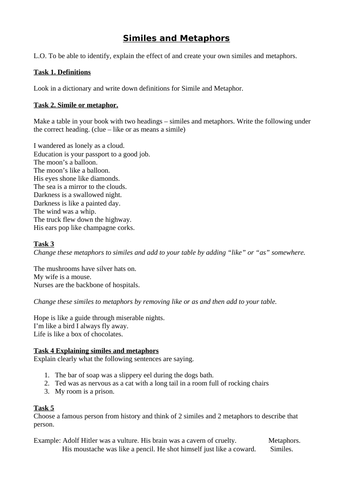
Similes and Metaphors worksheets
Subject: English
Age range: 7-11
Resource type: Worksheet/Activity
Last updated
9 August 2023
- Share through email
- Share through twitter
- Share through linkedin
- Share through facebook
- Share through pinterest

Free worksheets focused on figurative language.
Creative Commons "Sharealike"
Get this resource as part of a bundle and save up to 77%
A bundle is a package of resources grouped together to teach a particular topic, or a series of lessons, in one place.
Figurative Language (Simile, metaphor, personification, alliteration)
Includes various worksheets to support the teaching of figurative language.
Your rating is required to reflect your happiness.
It's good to leave some feedback.
Something went wrong, please try again later.
Empty reply does not make any sense for the end user
LeadpractitionerEnglish
Nice range of activities. Thanks for sharing.
Mariandingle
Safri104linda.
I used this for my lower ability Year 9 group. Great resource.
Report this resource to let us know if it violates our terms and conditions. Our customer service team will review your report and will be in touch.
Not quite what you were looking for? Search by keyword to find the right resource:

Why Do We Use War Metaphors to Talk About Teaching?

The Power of Language
Exploring new metaphors, new metaphors lead to new priorities.

Rethinking the language we use to talk about teaching may help us reshape schools in ways that are better for all who work in them.
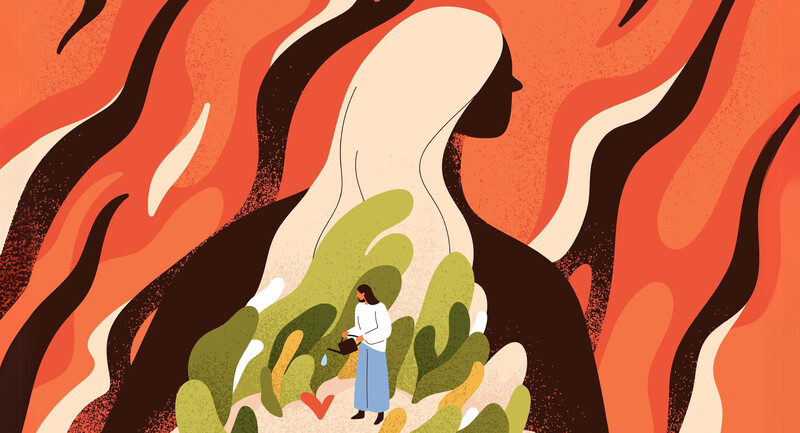
Education as Sustainable Agriculture
Education as a community garden, education as an orchestra, ideas for action, .css-16w6vyg{margin:0;font-family:'poppins',sans-serif;font-weight:400;font-size:0.875rem;line-height:1.43;font-size:1rem;font-weight:400;line-height:1.625rem;letter-spacing:0.2px;} suggestions for how you can engage your community in reimagining the metaphors we use in education. use this activity , along with this blog post, at a faculty meeting or in a community dialogue with students and families to explore the power of metaphor together. as part of new teacher mentorship or induction programs, invite participants to share their educational philosophies and to imagine metaphors that align with them. return to these visions throughout the year. pay attention to the language and metaphors that you hear yourself and your colleagues using. make a list of words related to war or factories as you hear them in school. notice during a typical school day how often these words are used in conversation or written communications with students, teachers, administrators, or parents. are there particular contexts in which these words are used more often (such as staff meetings, iep meetings, standardized tests) discuss with your colleagues – hypothesize about what consequences seem to occur as the result of this language. .

Pat LaClair is a Program Director at UP for Learning, joining the organization after 10 years of teaching middle and high school in northern Vermont. He began his career as a Latin teacher, but found a true passion in supporting students through personalized, project-based learning. UP for Learning supports youth-adult teams in schools around the country as they identify, explore, and take action on issues of shared importance. UP co-designs projects with school partners focused on social-emotional learning, student voice, equity, and sustainability. We support these school teams as they analyze data and implement a plan of action for systemic change, based on community input.

Lindsey Halman is the executive director of UP for Learning, a nonprofit with the mission of empowering youth and adults to reimagine and transform education together. Prior to joining UP, she spent 15 years as a middle-level educator, leader and advocate, co-founding The Edge Academy in Essex, Vermont. UP for Learning supports youth-adult teams in schools around the country as they identify, explore, and take action on issues of shared importance. UP co-designs projects with school partners focused on social-emotional learning, student voice, equity, and sustainability. We support these school teams as they analyze data and implement a plan of action for systemic change, based on community input.
ASCD is dedicated to professional growth and well-being.
Let's put your vision into action., related blogs.

Podcast: Making Every Connection Matter in Schools

5 Things Abbott Elementary Gets Right About Public Education
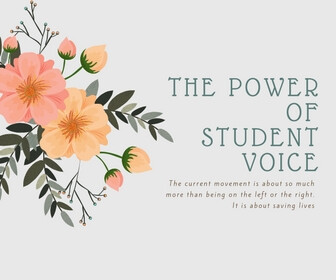
The Power of Student Voice: Join Us and Act Now

School Culture Versus School Climate

What’s the Kindest Thing You’ve Seen a Student Do?

IMAGES
VIDEO
COMMENTS
Metaphors for Homework. 1. A Set of Instructions or Steps. Meaning: Homework can be likened to a set of instructions or steps, similar to following a recipe. In a Sentence: Just as a chef follows a recipe to create a culinary masterpiece, students follow the instructions in their homework to master a subject. 2.
Metaphors for Homework. 1. A Mountain to Climb. Meaning: Homework is as challenging as scaling a towering mountain, requiring determination, effort, and stamina. In a Sentence: The calculus assignment felt like a mountain to climb, but I conquered it with sheer perseverance. 2.
Let's talk about metaphors for homework. It's like comparing homework to different things to help us understand it better. From saying it's a mountain to climb to calling it a puzzle to solve, metaphors make homework feel more relatable. So, get ready to explore the world of homework metaphors and see your assignments in a whole new light ...
Related: 19 Metaphors about Teaching and Teachers Related: 12 Metaphors about Students Related: 23 Metaphors about School and Education Inspiring Metaphors for Learning 1. A journey of 1000 miles starts with a single step. This metaphor means that a student who wants to learn something big (like a new language, or getting a degree) must start somewhere: so go out and start learning.
Here are fifty more challenging examples of metaphors. The slashes indicate line breaks. The light flows into the bowl of the midnight sky, violet, amber and rose. Men court not death when there are sweets still left in life to taste. In capitalism, money is the life blood of society but charity is the soul.
To hit the sack: to go to bed. To be on the ball: another baseball metaphor. This one means to be alert and reactive to a given situation. To feel under the weather: to feel sick. Speak of the devil: what someone says when a person who was the subject of conversation joins the conversation circle.
Examples of Popular Metaphors. "All the world's a stage, and all the men and women merely players.". - William Shakespeare. " I am the good shepherd…and I lay down my life for the sheep.". - The Bible, John 10:14-15. "All our words are but crumbs that fall down from the feast of the mind.". - Khalil Gibran.
A metaphor is a figure of speech that uses a word or phrase to describe another object or action that is impossible to take literally. Metaphors represent abstract concepts in creative ways. Using metaphors makes writing and speaking more interesting. The resources on this page show how to use figures of speech to call the audience's ...
Metaphors can make prose more muscular or imagery more vivid: 1. "Exhaustion is a thin blanket tattered with bullet holes." ―If Then, Matthew De Abaitua. 2. "But it is just two lovers, holding hands and in a hurry to reach their car, their locked hands a starfish leaping through the dark." ―Rabbit, Run, John Updike. 3.
These metaphor worksheets will help students explore the difference between similes and metaphors. These metaphor worksheets will teach students to identify metaphors, use metaphors in writing and distinguish between metaphors and similes. Each of the metaphor worksheets are free to duplicate for home or classroom use.
Metaphor Examples in Poems. "The fog comes / on little cat feet.". - Carl Sandburg. "I wandered lonely as a cloud" - William Wordsworth. "Life's but a walking shadow, a poor player / That struts and frets his hour upon the stage" - William Shakespeare.
Click 'show more' for more information on metaphors and similes. Subscribe for more tips for teachers, home learning support and homework help videos. You ca...
Use these metaphors worksheets in school or at home. a. Grades K-5 Metaphors Worksheets. b. Grades 6-8 Metaphors Worksheets. Here is a graphic preview for all the kindergarten, 1st grade, 2nd grade, 3rd grade, 4th grade, and 5th grade Metaphors Worksheets. Click on the image to display our metaphors worksheets.
A metaphor is a rhetorical device that makes a non-literal comparison between two unlike things. Metaphors are used to describe an object or action by stating (or implying) that it is something else (e.g., "knowledge is a butterfly"). Metaphors typically have two parts: A tenor is the thing or idea that the metaphor describes (e.g ...
Here's a quick and simple definition: A metaphor is a figure of speech that compares two different things by saying that one thing is the other. The comparison in a metaphor can be stated explicitly, as in the sentence "Love is a battlefield." Other times, the writer may make this equation between two things implicitly, as in, "He was wounded ...
A basic metaphor is a figure speech that makes a hidden, in plain sight, comparison between two things or concepts. In most cases, the comparison is seen as contradictory that focuses on a single commonly held characteristics. The following collection of activity sheets will teach your students how to identify and interpret metaphors.
A metaphor is a form of direct comparison, where one thing is said to be another, directly, by using the verb "to be". For example: The boy is a cypress press. James is a stallion dashing across ...
For example, the metaphor "The man is a dinosaur" can become an extended metaphor if the author of a book decided to give the man the nickname "dinosaur" for the rest of the book. This is a metaphor that will span much longer than just one sentence! 4. Metaphors vs Similes. We often learn about metaphors and similes at the same time.
Mixed Practice: Similes and Metaphors #1. Worksheet. Figurative Language Maze: Summer Metaphors. Worksheet. Analyzing Poetry: "'Hope' is the thing with feathers" by Emily Dickinson. Worksheet. Analyzing Poetry: "We Wear the Mask" by Paul Laurence Dunbar. Worksheet. Metaphors and Similes.
Exercise 1. Match the options with the sentences to complete the metaphor. a breath of fresh air/ a giraffe/ a cowshed/ an anthill/ a bronze bust. 1. Your room is _____. It's so filthy and cluttered. 2. He is _____. He can surely get into the basketball team if he works hard.
Figurative Language (Simile, metaphor, personification, alliteration) Includes various worksheets to support the teaching of figurative language. was £4.00. See more. to let us know if it violates our terms and conditions. Our customer service team will review your report and will be in touch. Not quite what you were looking for?
Find fun metaphor worksheets, games and other activities to help you save time when building exciting and informative lesson plans on this topic. These helpful metaphor worksheets can also be used at home for extra practise, homework tasks and for children who have a passion for creative writing.
Perhaps war metaphors are the easiest shorthand we have for the grind of teaching. Working in education is often more exhausting and less rewarding than it should be: In trying to give our students the best experience, teachers push up against the constraints of the system, often in ways that leave them feeling isolated or even attacked by colleagues, administrators, parents, or the public.